WEEKLY FORECAST
3.11.2025 – 3.17.2025
CENTRAL FLORIDA’S BEST FISHING REPORT

Don't miss the first Annual Marine Exchange & Boat Show THIS weekend -- offering FREE admission, FREE parking and SOMETHING for everyone!
As the week progresses, we’re expecting to see some pretty favorable fishing conditions. Plus, this weekend (when you’re not out on the water), don’t miss your chance to BUY, SELL or TRADE marine gear — and check out some really sweet boats — at the First Annual Marine Exchange & Boat Show hosted by the Space Coast Boating Association. The event runs from 8am – 4pm on both Saturday and Sunday at the Merritt Square Mall this weekend (March 15/16). Admission and parking are FREE! Explore incredible bargains and also be sure to stop by the booths of many Spacefish sponsors, including the FSFA, Boaters Exchange, and Boat & Motors Superstores, among others!
WEATHER & CONDITIONS
BITE OPPORTUNITY INDEX
OFFSHORE
INSHORE
SURF
FRESHWATER

Weather Overview
It looks like we are in for a pretty nice week ahead although the beginning and end of the week will have higher winds. The overall forecast is mostly sunny skies through Friday and partly cloudy over the weekend. High temperatures will fluctuate between the mid 70’s and low 80’s. Tuesday (NW) the wind will still be high in the morning but will start to taper off as the day goes on. Wednesday (N/SE), Thursday (S/SSE) and Friday (NW) are the days with the lowest winds this week. Saturday (SE) the wind will start to increase throughout the day and remain higher through Sunday (SE).
GIVEAWAYS
FSFA MEMBERSHIP GIVEAWAY
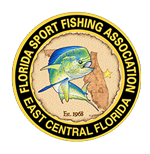 For the next several months we’re giving away two annual family memberships to the Florida Sport Fishing Association. Learn more about the club and membership benefits on FSFAclub.org.
For the next several months we’re giving away two annual family memberships to the Florida Sport Fishing Association. Learn more about the club and membership benefits on FSFAclub.org.
Congrats to last month’s winners, Lacie Shook and Charles Emanuel! This month’s winners will be drawn and announced April 1st!
CONTEST RULES
- Eligibility
The FSFA Club Membership Giveaway Contest (the “Contest”) is open to legal residents of the fifty (50) United States and the District of Columbia who are at least eighteen (18) years old at the time of entry. Employees of Spacefish and other companies associated with the promotion of the Contest, and their respective parents, subsidiaries, affiliates and advertising and promotion agencies as well as the immediate family (spouse, parents, siblings, and children) and household members of each such employee are not eligible. The Contest is subject to federal, state, and local laws and regulations. - Sponsor
The Contest is sponsored by Spacefish and the Florida Sport Fishing Association. - Agreement to Official Rules
Participation in the Contest constitutes entrant’s full and unconditional agreement to and acceptance of these Official Rules and the decisions of the Sponsor, which are final and binding. Winning a prize is contingent upon being compliant with these Official Rules and fulfilling all other requirements set forth herein. - Contest Period
The Contest begins on Nov 26 at 12:00 AM EASTERN (the “Contest Period”) and will continue for 3 months. Entries that are submitted before or after the Contest Period will be disqualified. Submissions will be accepted for the duration of the Contest by completing the contest entry form on Spacefishreport.com - How to Enter
Online entry will be available by visiting Spacefish.com and following the directions provided to fill out the entry information, and submit. Limit one (1) entry per person, per email address, for the duration of the Contest Period, regardless of method of entry. Entries received from any person or e-mail address in excess of the stated limitation will be void. All entries become the property of Sponsor and will not be acknowledged or returned. - Prize Drawing
Every month, the Sponsor will select a winner in a random drawing from among all eligible entries received. The odds of being selected depend on the number of entries received. Sponsor will contact winner, but if the potential winner does not claim their prize five (5) days, the Sponsor may select an alternate potential winner in his/her place at random from the remaining non-winning, eligible entries, or pool the prize into another subsequent giveaway. - Winner Notification The potential winners will announced in the weekly fishing report and emailed/called with the contact info provided. Each potential Grand and First Prize winner (parent/legal guardian if a minor in his/her state of residence) will be required to complete, electronically sign and submit a Declaration of Compliance within five (5) days of the date notice or attempted notice is sent, in order to claim his/her prize. If a potential winner cannot be contacted, or fails to submit the Declaration of Compliance within the required time period (if applicable), or prize is returned as undeliverable, potential winner forfeits prize. If the potential winner is at least 18 but still considered a minor in his/her jurisdiction of residence, Sponsor reserves the right to award the prize in the name of his/her parent or legal guardian, who will be required to sign the Declaration of Compliance on the potential winners behalf and fulfill any other requirements imposed on winner set forth herein. Potential winners must continue to comply with all terms and conditions of these Official Rules, and winning is contingent upon fulfilling all requirements. In the event that a potential winner is disqualified for any reason, Sponsor will award the applicable prize to an alternate winner by random drawing from among all remaining eligible entries. Only three (3) alternate drawings will be held, after which the prize will remain un-awarded.
- Prizes
(1) annual FSFA family membership ($50 value each) - General Conditions
In the event that the operation, security, or administration of the Contest is impaired in any way for any reason, including, but not limited to fraud, virus, bug, worm, unauthorized human intervention or other technical problem, or in the event the Contest is unable to run as planned for any other reason, as determined by Sponsor in its sole discretion, the Sponsor may, in its sole discretion, either (a) suspend the Contest to address the impairment and then resume the Contest in a manner that best conforms to the spirit of these Official Rules or (b) terminate the Contest and, in the event of termination, award the prize at random from among the eligible, non-suspect entries received up to the time of the impairment. The Sponsor reserves the right in its sole discretion to disqualify any individual it finds to be tampering with the entry process or the operation of the Contest or to be acting in violation of these Official Rules or in an unsportsmanlike or disruptive manner. Any attempt by any person to damage the website or undermine the legitimate operation of the Contest may be a violation of criminal and civil law, and, should such an attempt be made, the Sponsor reserves the right to seek damages (including attorney’s fees) and any other remedies from any such person to the fullest extent permitted by law. Failure by the Sponsor to enforce any provision of these Official Rules shall not constitute a waiver of that provision. - Release and Limitations of Liability
By participating in the Contest, entrants agree to release and hold harmless the Sponsor, and each of their respective parents, subsidiaries, affiliates, advertising and promotion agencies, other companies associated with the Contest, and each of their respective officers, directors, employees, shareholders, representatives, and agents (the Released Parties) from and against any claim or cause of action arising out of participation in the Contest or receipt or use of the prize (including any travel or activity related thereto), including, but not limited to: (a) any technical errors associated with the Contest, including lost, interrupted or unavailable Internet Service Provider (ISP), network, server, wireless service provider, or other connections, availability or accessibility or miscommunications or failed computer, satellite, telephone, cellular tower or cable transmissions, lines, or technical failure or jumbled, scrambled, delayed, or misdirected transmissions or computer hardware or software malfunctions, failures or difficulties; (b) unauthorized human intervention in the Contest; (c) mechanical, network, electronic, computer, human, printing or typographical errors; (d) application downloads, (e) any other errors or problems in connection with the Contest, including, without limitation, errors that may occur in the administration of the Contest, the announcement of the winner, the cancellation or postponement of the event and/or the flyover, if applicable, the incorrect downloading of the application, the processing of entries application downloads or in any Contest-related materials; or (f) injury, death, losses or damages of any kind, to persons or property which may be caused, directly or indirectly, in whole or in part, from entrants participation in the Contest or acceptance, receipt or misuse of the prize (including any travel or activity related thereto). Entrant further agrees that in any cause of action, the Released Parties liability will be limited to the cost of entering and participating in the Contest, and in no event shall the entrant be entitled to receive attorney’s fees. Released Parties are also not responsible for any incorrect or inaccurate information, whether caused by site users, tampering, hacking, or by any equipment or programming associated with or utilized in the Contest. Entrant waives the right to claim any damages whatsoever, including, but not limited to, punitive, consequential, direct, or indirect damages. - Disputes
Except where prohibited, each entrant agrees that any and all disputes, claims and causes of action arising out of, or connected with, the Contest or any prize awarded shall be resolved individually, without resort to any form of class action, and exclusively by the appropriate court located in Florida. All issues and questions concerning the construction, validity, interpretation and enforceability of these Official Rules, entrants rights and obligations, or the rights and obligations of the Sponsor in connection with the Contest, shall be governed by, and construed in accordance with, the laws of Florida, without giving effect to any choice of law or conflict of law rules, which would cause the application of the laws of any jurisdiction other than Florida. - Privacy
Information collected from entrants is subject to sponsor’s privacy policy.
FSFA Membership Contest Entry
CFSA MEMBERSHIP GIVEAWAY
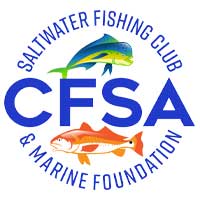 For the next several months we’re giving away two annual family memberships to the Central Florida Saltwater Anglers club. Check out everything this awesome club has to offer at their website, mycfoa.com.
For the next several months we’re giving away two annual family memberships to the Central Florida Saltwater Anglers club. Check out everything this awesome club has to offer at their website, mycfoa.com.
Congrats to last month’s winners, Stuart Mizrahi and Eric Allen! This month’s winners will be drawn and announced April 1st!
CONTEST RULES
NO PURCHASE IS NECESSARY TO ENTER OR WIN. A PURCHASE WILL NOT INCREASE YOUR CHANCES OF WINNING. ALL FEDERAL, STATE, LOCAL, AND MUNICIPAL LAWS AND REGULATIONS APPLY. VOID WHERE PROHIBITED.
- Eligibility
The CFSA Club Membership Giveaway Contest (the “Contest”) is open to legal residents of the fifty (50) United States and the District of Columbia who are at least eighteen (18) years old at the time of entry. Employees of Spacefish and other companies associated with the promotion of the Contest, and their respective parents, subsidiaries, affiliates and advertising and promotion agencies as well as the immediate family (spouse, parents, siblings, and children) and household members of each such employee are not eligible. The Contest is subject to federal, state, and local laws and regulations. - Sponsor
The Contest is sponsored by Spacefish and the CFSA - Agreement to Official Rules
Participation in the Contest constitutes entrant’s full and unconditional agreement to and acceptance of these Official Rules and the decisions of the Sponsor, which are final and binding. Winning a prize is contingent upon being compliant with these Official Rules and fulfilling all other requirements set forth herein. - Contest Period
The Contest begins on Jan 28 at 12:00 AM EASTERN (the “Contest Period”) and will continue for 3 months. Entries that are submitted before or after the Contest Period will be disqualified. Submissions will be accepted for the duration of the Contest by completing the contest entry form on Spacefish.com - How to Enter
Online entry will be available by visiting Spacefish.com and following the directions provided to fill out the entry information, and submit. Limit one (1) entry per person, per email address, for the duration of the Contest Period, regardless of method of entry. Entries received from any person or e-mail address in excess of the stated limitation will be void. All entries become the property of Sponsor and will not be acknowledged or returned. - Prize Drawing
Every month, the Sponsor will select a winner in a random drawing from among all eligible entries received. The odds of being selected depend on the number of entries received. Sponsor will contact winner, but if the potential winner does not claim their prize five (5) days, the Sponsor may select an alternate potential winner in his/her place at random from the remaining non-winning, eligible entries, or pool the prize into another subsequent giveaway. - Winner Notification The potential winners will announced in the weekly fishing report and emailed/called with the contact info provided. Each potential Grand and First Prize winner (parent/legal guardian if a minor in his/her state of residence) will be required to complete, electronically sign and submit a Declaration of Compliance within five (5) days of the date notice or attempted notice is sent, in order to claim his/her prize. If a potential winner cannot be contacted, or fails to submit the Declaration of Compliance within the required time period (if applicable), or prize is returned as undeliverable, potential winner forfeits prize. If the potential winner is at least 18 but still considered a minor in his/her jurisdiction of residence, Sponsor reserves the right to award the prize in the name of his/her parent or legal guardian, who will be required to sign the Declaration of Compliance on the potential winners behalf and fulfill any other requirements imposed on winner set forth herein. Potential winners must continue to comply with all terms and conditions of these Official Rules, and winning is contingent upon fulfilling all requirements. In the event that a potential winner is disqualified for any reason, Sponsor will award the applicable prize to an alternate winner by random drawing from among all remaining eligible entries. Only three (3) alternate drawings will be held, after which the prize will remain un-awarded.
- Prizes
(2) annual CSFA family membership ($60 value each) - General Conditions
In the event that the operation, security, or administration of the Contest is impaired in any way for any reason, including, but not limited to fraud, virus, bug, worm, unauthorized human intervention or other technical problem, or in the event the Contest is unable to run as planned for any other reason, as determined by Sponsor in its sole discretion, the Sponsor may, in its sole discretion, either (a) suspend the Contest to address the impairment and then resume the Contest in a manner that best conforms to the spirit of these Official Rules or (b) terminate the Contest and, in the event of termination, award the prize at random from among the eligible, non-suspect entries received up to the time of the impairment. The Sponsor reserves the right in its sole discretion to disqualify any individual it finds to be tampering with the entry process or the operation of the Contest or to be acting in violation of these Official Rules or in an unsportsmanlike or disruptive manner. Any attempt by any person to damage the website or undermine the legitimate operation of the Contest may be a violation of criminal and civil law, and, should such an attempt be made, the Sponsor reserves the right to seek damages (including attorney’s fees) and any other remedies from any such person to the fullest extent permitted by law. Failure by the Sponsor to enforce any provision of these Official Rules shall not constitute a waiver of that provision. - Release and Limitations of Liability
By participating in the Contest, entrants agree to release and hold harmless the Sponsor, and each of their respective parents, subsidiaries, affiliates, advertising and promotion agencies, other companies associated with the Contest, and each of their respective officers, directors, employees, shareholders, representatives, and agents (the Released Parties) from and against any claim or cause of action arising out of participation in the Contest or receipt or use of the prize (including any travel or activity related thereto), including, but not limited to: (a) any technical errors associated with the Contest, including lost, interrupted or unavailable Internet Service Provider (ISP), network, server, wireless service provider, or other connections, availability or accessibility or miscommunications or failed computer, satellite, telephone, cellular tower or cable transmissions, lines, or technical failure or jumbled, scrambled, delayed, or misdirected transmissions or computer hardware or software malfunctions, failures or difficulties; (b) unauthorized human intervention in the Contest; (c) mechanical, network, electronic, computer, human, printing or typographical errors; (d) application downloads, (e) any other errors or problems in connection with the Contest, including, without limitation, errors that may occur in the administration of the Contest, the announcement of the winner, the cancellation or postponement of the event and/or the flyover, if applicable, the incorrect downloading of the application, the processing of entries application downloads or in any Contest-related materials; or (f) injury, death, losses or damages of any kind, to persons or property which may be caused, directly or indirectly, in whole or in part, from entrants participation in the Contest or acceptance, receipt or misuse of the prize (including any travel or activity related thereto). Entrant further agrees that in any cause of action, the Released Parties liability will be limited to the cost of entering and participating in the Contest, and in no event shall the entrant be entitled to receive attorney’s fees. Released Parties are also not responsible for any incorrect or inaccurate information, whether caused by site users, tampering, hacking, or by any equipment or programming associated with or utilized in the Contest. Entrant waives the right to claim any damages whatsoever, including, but not limited to, punitive, consequential, direct, or indirect damages. - Disputes
Except where prohibited, each entrant agrees that any and all disputes, claims and causes of action arising out of, or connected with, the Contest or any prize awarded shall be resolved individually, without resort to any form of class action, and exclusively by the appropriate court located in Florida. All issues and questions concerning the construction, validity, interpretation and enforceability of these Official Rules, entrants rights and obligations, or the rights and obligations of the Sponsor in connection with the Contest, shall be governed by, and construed in accordance with, the laws of Florida, without giving effect to any choice of law or conflict of law rules, which would cause the application of the laws of any jurisdiction other than Florida. - Privacy
Information collected from entrants is subject to sponsor’s privacy policy.
CFSA Membership Contest Entry
Weekly Strike-Zone Giveaway
 Each week, we’ll randomly draw a name from our email subscriber list to award a $20 Strike-Zone Fishing Gift Card. To enter, all you need to do is subscribe to our weekly forecast email (once subscribed, you’re eligible to win EVERY week).
Each week, we’ll randomly draw a name from our email subscriber list to award a $20 Strike-Zone Fishing Gift Card. To enter, all you need to do is subscribe to our weekly forecast email (once subscribed, you’re eligible to win EVERY week).
Congrats to this week's winner, Robert R Kennelly, Sebastian
NOTICE: If you are announced as a winner, you must EMAIL US within 5 days to claim your prize (please include your phone number and mailing address), or your prize will be forfeited and added back into the giveaway pool for future winners.
Subscribe for Contest Entry
To enter the WEEKLY giveaway contest for a $20 Strike-Zone Fishing Gift Card, all you need to do is subscribe to our fishing report via email. One winner will be drawn from all current subscribers, every week.
"*" indicates required fields
CONTEST RULES
NO PURCHASE IS NECESSARY TO ENTER OR WIN. A PURCHASE WILL NOT INCREASE YOUR CHANCES OF WINNING. ALL FEDERAL, STATE, LOCAL, AND MUNICIPAL LAWS AND REGULATIONS APPLY. VOID WHERE PROHIBITED.
- Eligibility
Spacefish Giveaway Contest (the “Contest”) is open to legal residents of the fifty (50) United States and the District of Columbia who are at least eighteen (18) years old at the time of entry. Employees of Spacefish and other companies associated with the promotion of the Contest, and their respective parents, subsidiaries, affiliates and advertising and promotion agencies as well as the immediate family (spouse, parents, siblings, and children) and household members of each such employee are not eligible. The Contest is subject to federal, state, and local laws and regulations. - Sponsor
The Contest is sponsored by Spacefish, located at 745 Hibiscus Dr, Satellite Beach, Florida 32937. - Agreement to Official Rules
Participation in the Contest constitutes entrant’s full and unconditional agreement to and acceptance of these Official Rules and the decisions of the Sponsor, which are final and binding. Winning a prize is contingent upon being compliant with these Official Rules and fulfilling all other requirements set forth herein. - Contest Period
The Contest runs in definitely, every week from Tuesday to the following Monday (the “Contest Period”). - How to Enter
Online entry will be available by visiting the latest fishing report on our website (spacefishreport.com) and following the directions provided to fill out the entry information, and submit. Limit one (1) entry per person, per email address, and per household for the duration of the Contest Period, regardless of method of entry. Entries received from any person, e-mail address, or household in excess of the stated limitation will be void. All entries become the property of Sponsor and will not be acknowledged or returned. - Prize Drawing
Every Tuesday, the Sponsor will select potential winners in a random drawing from among all eligible entries received. The odds of being selected depend on the number of entries received. The Sponsor will publish the winner’s name in its weekly fishing report on May 1, 2018. If the potential winner does not claim their prize by emailing info@spacefishreport.com within five (5) days, the Sponsor may select an alternate potential winner in his/her place at random from the remaining non-winning, eligible entries. - Winner Notification The potential winners will announced in the weekly fishing report. Each potential Grand and First Prize winner (parent/legal guardian if a minor in his/her state of residence) will be required to complete, electronically sign and submit a Declaration of Compliance within five (5) days of the date notice or attempted notice is sent, in order to claim his/her prize. If a potential winner cannot be contacted, or fails to submit the Declaration of Compliance within the required time period (if applicable), or prize is returned as undeliverable, potential winner forfeits prize. If the potential winner is at least 18 but still considered a minor in his/her jurisdiction of residence, Sponsor reserves the right to award the prize in the name of his/her parent or legal guardian, who will be required to sign the Declaration of Compliance on the potential winners behalf and fulfill any other requirements imposed on winner set forth herein. Potential winners must continue to comply with all terms and conditions of these Official Rules, and winning is contingent upon fulfilling all requirements. In the event that a potential winner is disqualified for any reason, Sponsor will award the applicable prize to an alternate winner by random drawing from among all remaining eligible entries. Only three (3) alternate drawings will be held, after which the prize will remain un-awarded. Prizes will be fulfilled approximately 8-10 weeks after the conclusion of the Contest.
- Prizes
(1) Strike-Zone Fishing $20 Gift Card - General Conditions
In the event that the operation, security, or administration of the Contest is impaired in any way for any reason, including, but not limited to fraud, virus, bug, worm, unauthorized human intervention or other technical problem, or in the event the Contest is unable to run as planned for any other reason, as determined by Sponsor in its sole discretion, the Sponsor may, in its sole discretion, either (a) suspend the Contest to address the impairment and then resume the Contest in a manner that best conforms to the spirit of these Official Rules or (b) terminate the Contest and, in the event of termination, award the prize at random from among the eligible, non-suspect entries received up to the time of the impairment. The Sponsor reserves the right in its sole discretion to disqualify any individual it finds to be tampering with the entry process or the operation of the Contest or to be acting in violation of these Official Rules or in an unsportsmanlike or disruptive manner. Any attempt by any person to damage the website or undermine the legitimate operation of the Contest may be a violation of criminal and civil law, and, should such an attempt be made, the Sponsor reserves the right to seek damages (including attorney’s fees) and any other remedies from any such person to the fullest extent permitted by law. Failure by the Sponsor to enforce any provision of these Official Rules shall not constitute a waiver of that provision. - Release and Limitations of Liability
By participating in the Contest, entrants agree to release and hold harmless the Sponsor, and each of their respective parents, subsidiaries, affiliates, advertising and promotion agencies, other companies associated with the Contest, and each of their respective officers, directors, employees, shareholders, representatives, and agents (the Released Parties) from and against any claim or cause of action arising out of participation in the Contest or receipt or use of the prize (including any travel or activity related thereto), including, but not limited to: (a) any technical errors associated with the Contest, including lost, interrupted or unavailable Internet Service Provider (ISP), network, server, wireless service provider, or other connections, availability or accessibility or miscommunications or failed computer, satellite, telephone, cellular tower or cable transmissions, lines, or technical failure or jumbled, scrambled, delayed, or misdirected transmissions or computer hardware or software malfunctions, failures or difficulties; (b) unauthorized human intervention in the Contest; (c) mechanical, network, electronic, computer, human, printing or typographical errors; (d) application downloads, (e) any other errors or problems in connection with the Contest, including, without limitation, errors that may occur in the administration of the Contest, the announcement of the winner, the cancellation or postponement of the event and/or the flyover, if applicable, the incorrect downloading of the application, the processing of entries application downloads or in any Contest-related materials; or (f) injury, death, losses or damages of any kind, to persons or property which may be caused, directly or indirectly, in whole or in part, from entrants participation in the Contest or acceptance, receipt or misuse of the prize (including any travel or activity related thereto). Entrant further agrees that in any cause of action, the Released Parties liability will be limited to the cost of entering and participating in the Contest, and in no event shall the entrant be entitled to receive attorney’s fees. Released Parties are also not responsible for any incorrect or inaccurate information, whether caused by site users, tampering, hacking, or by any equipment or programming associated with or utilized in the Contest. Entrant waives the right to claim any damages whatsoever, including, but not limited to, punitive, consequential, direct, or indirect damages. - Disputes
Except where prohibited, each entrant agrees that any and all disputes, claims and causes of action arising out of, or connected with, the Contest or any prize awarded shall be resolved individually, without resort to any form of class action, and exclusively by the appropriate court located in Florida. All issues and questions concerning the construction, validity, interpretation and enforceability of these Official Rules, entrants rights and obligations, or the rights and obligations of the Sponsor in connection with the Contest, shall be governed by, and construed in accordance with, the laws of Florida, without giving effect to any choice of law or conflict of law rules, which would cause the application of the laws of any jurisdiction other than Florida. - Privacy
Information collected from entrants is subject to sponsor’s privacy policy.
Cornhole Giveaway
Since 1960, Carroll Distributing has been keeping the local shelves stocked and taps flowing for a long list of everybody’s favorite beverages. Now, they are going to be distributing some awesome prizes to Spacefish readers every month. This month, the prize is a FSU themed cornhole set!
CONTEST RULES
- Eligibility
Spacefish Giveaway Contest (the “Contest”) is open to legal residents of the fifty (50) United States and the District of Columbia who are at least eighteen (18) years old at the time of entry. Employees of Spacefish and other companies associated with the promotion of the Contest, and their respective parents, subsidiaries, affiliates and advertising and promotion agencies as well as the immediate family (spouse, parents, siblings, and children) and household members of each such employee are not eligible. The Contest is subject to federal, state, and local laws and regulations. - Sponsor
The Contest is sponsored by Carroll Distributing. - Agreement to Official Rules
Participation in the Contest constitutes entrant’s full and unconditional agreement to and acceptance of these Official Rules and the decisions of the Sponsor, which are final and binding. Winning a prize is contingent upon being compliant with these Official Rules and fulfilling all other requirements set forth herein. - Contest Period
The Contest runs from Feb 18 – March 18, 2025 - How to Enter
Online entry will be available by visiting the latest fishing report on our website (spacefish.com) and following the directions provided to fill out the entry information, and submit. Limit one (1) entry per person, per email address, and per household for the duration of the Contest Period, regardless of method of entry. Entries received from any person, e-mail address, or household in excess of the stated limitation will be void. All entries become the property of Sponsor and will not be acknowledged or returned. - Prize Drawing
One winner will be selected among all Spacefish email subscribers. The odds of being selected depend on the number of entries received. The Sponsor will publish the winner’s name in its weekly fishing report on Nov 26 and the winner will be contacted via email. If the potential winner does not claim their prize by responding within five (5) days, the Sponsor may select an alternate potential winner in his/her place at random from the remaining non-winning, eligible entries. - Winner Notification The potential winner will announced in the weekly fishing report on March 18. The winner (parent/legal guardian if a minor in his/her state of residence) will be required to complete, electronically sign and submit a Declaration of Compliance within five (5) days of the date notice or attempted notice is sent, in order to claim his/her prize. If a potential winner cannot be contacted, or fails to submit the Declaration of Compliance within the required time period (if applicable), or prize is returned as undeliverable, potential winner forfeits prize. If the potential winner is at least 18 but still considered a minor in his/her jurisdiction of residence, Sponsor reserves the right to award the prize in the name of his/her parent or legal guardian, who will be required to sign the Declaration of Compliance on the potential winners behalf and fulfill any other requirements imposed on winner set forth herein. Potential winners must continue to comply with all terms and conditions of these Official Rules, and winning is contingent upon fulfilling all requirements. In the event that a potential winner is disqualified for any reason, Sponsor will award the applicable prize to an alternate winner by random drawing from among all remaining eligible entries. Only three (3) alternate drawings will be held, after which the prize will remain un-awarded. Prizes will be fulfilled approximately 8-10 weeks after the conclusion of the Contest.
- Prizes
(1) Budlight Cornhole Set - General Conditions
In the event that the operation, security, or administration of the Contest is impaired in any way for any reason, including, but not limited to fraud, virus, bug, worm, unauthorized human intervention or other technical problem, or in the event the Contest is unable to run as planned for any other reason, as determined by Sponsor in its sole discretion, the Sponsor may, in its sole discretion, either (a) suspend the Contest to address the impairment and then resume the Contest in a manner that best conforms to the spirit of these Official Rules or (b) terminate the Contest and, in the event of termination, award the prize at random from among the eligible, non-suspect entries received up to the time of the impairment. The Sponsor reserves the right in its sole discretion to disqualify any individual it finds to be tampering with the entry process or the operation of the Contest or to be acting in violation of these Official Rules or in an unsportsmanlike or disruptive manner. Any attempt by any person to damage the website or undermine the legitimate operation of the Contest may be a violation of criminal and civil law, and, should such an attempt be made, the Sponsor reserves the right to seek damages (including attorney’s fees) and any other remedies from any such person to the fullest extent permitted by law. Failure by the Sponsor to enforce any provision of these Official Rules shall not constitute a waiver of that provision. - Release and Limitations of Liability
By participating in the Contest, entrants agree to release and hold harmless the Sponsor, and each of their respective parents, subsidiaries, affiliates, advertising and promotion agencies, other companies associated with the Contest, and each of their respective officers, directors, employees, shareholders, representatives, and agents (the Released Parties) from and against any claim or cause of action arising out of participation in the Contest or receipt or use of the prize (including any travel or activity related thereto), including, but not limited to: (a) any technical errors associated with the Contest, including lost, interrupted or unavailable Internet Service Provider (ISP), network, server, wireless service provider, or other connections, availability or accessibility or miscommunications or failed computer, satellite, telephone, cellular tower or cable transmissions, lines, or technical failure or jumbled, scrambled, delayed, or misdirected transmissions or computer hardware or software malfunctions, failures or difficulties; (b) unauthorized human intervention in the Contest; (c) mechanical, network, electronic, computer, human, printing or typographical errors; (d) application downloads, (e) any other errors or problems in connection with the Contest, including, without limitation, errors that may occur in the administration of the Contest, the announcement of the winner, the cancellation or postponement of the event and/or the flyover, if applicable, the incorrect downloading of the application, the processing of entries application downloads or in any Contest-related materials; or (f) injury, death, losses or damages of any kind, to persons or property which may be caused, directly or indirectly, in whole or in part, from entrants participation in the Contest or acceptance, receipt or misuse of the prize (including any travel or activity related thereto). Entrant further agrees that in any cause of action, the Released Parties liability will be limited to the cost of entering and participating in the Contest, and in no event shall the entrant be entitled to receive attorney’s fees. Released Parties are also not responsible for any incorrect or inaccurate information, whether caused by site users, tampering, hacking, or by any equipment or programming associated with or utilized in the Contest. Entrant waives the right to claim any damages whatsoever, including, but not limited to, punitive, consequential, direct, or indirect damages. - Disputes
Except where prohibited, each entrant agrees that any and all disputes, claims and causes of action arising out of, or connected with, the Contest or any prize awarded shall be resolved individually, without resort to any form of class action, and exclusively by the appropriate court located in Florida. All issues and questions concerning the construction, validity, interpretation and enforceability of these Official Rules, entrants rights and obligations, or the rights and obligations of the Sponsor in connection with the Contest, shall be governed by, and construed in accordance with, the laws of Florida, without giving effect to any choice of law or conflict of law rules, which would cause the application of the laws of any jurisdiction other than Florida. - Privacy
Information collected from entrants is subject to sponsor’s privacy policy.
Cornhole Giveaway
"*" indicates required fields
LATEST Reports

Afternoon Ambush: Lake Toho Midday Bass Report
KAYAK FISHING REPORT
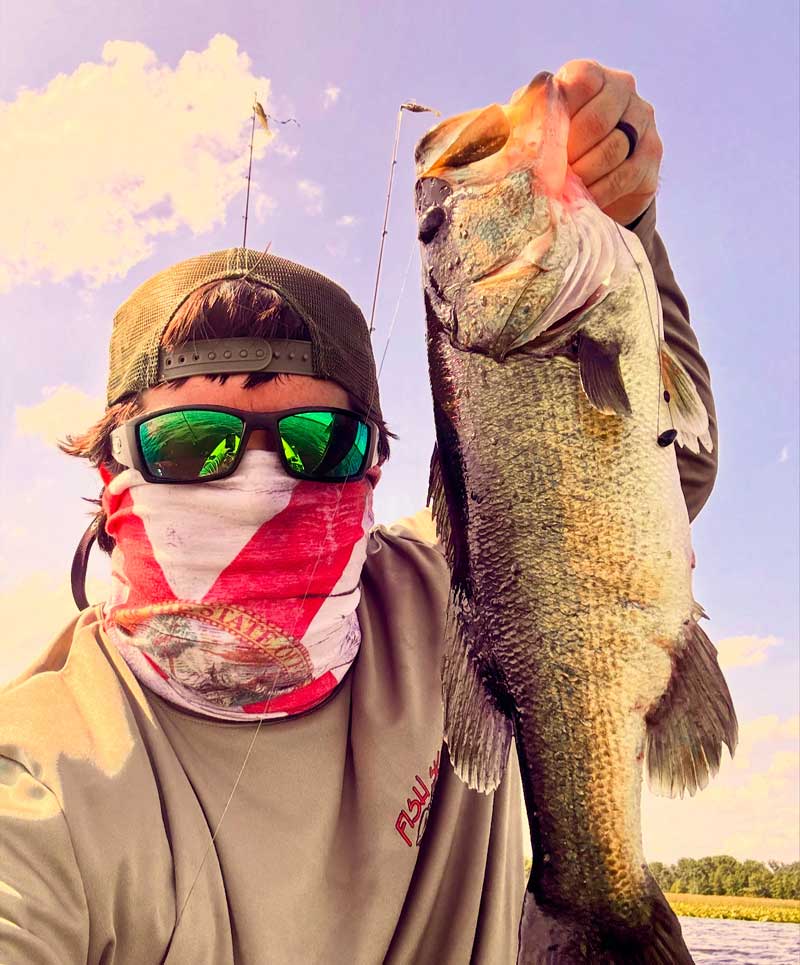
Afternoon Ambush: Lake Toho Midday Bass Report
A Weird Feeling… That Paid Off
I’m floating a few hundred yards off the shoreline on Lake Toho. Not exactly the true middle of the lake—it’s massive—but far enough from any visible structure or cover that it feels… weird. I’m not casting at docks, reeds, or lily pads. Just open water. But beneath the surface lies a field of submerged hydrilla.
Hydrilla is invasive, sure, but it’s the backbone of the Florida freshwater food chain. From minnows to bluegill, bass to birds, snakes, gators—you name it. When you find hydrilla, you find the gang. And I found it.
Already, I’d landed seven bass from this underwater jungle. Nothing huge yet, but the signs were all good. I knew if I kept grinding, a big one would eventually bite.
Speedworm Success
I switched over from the weightless jerkbaits to my baitcaster rigged with a Florida-rigged Bitters Vibe Speedworm in Okee Candy Gold. (Florida-rig = Texas-rigged with a pegged tungsten weight.) First cast, bombed out 30 yards. First retrieve, too fast. Nothing.
Second cast—I slowed it down. Let the bait sink. Felt it bumping through the weeds. THUMP.
I dropped the rod tip, counted to two, and unleashed a hookset from the right side of my kayak across to my left shoulder. The rod loaded up, the kayak added leverage, and the 3/0 EWG buried home. This fish was no dink. She tried to bulldog down under the kayak, into the Hobie Drive. I missed the first net attempt. Got her on the second.
That fish was the first of twelve on the speedworm. Three were solid. The rest were dinks, but I ended the day with 19 bass total. Not bad for a post-lunch trip.
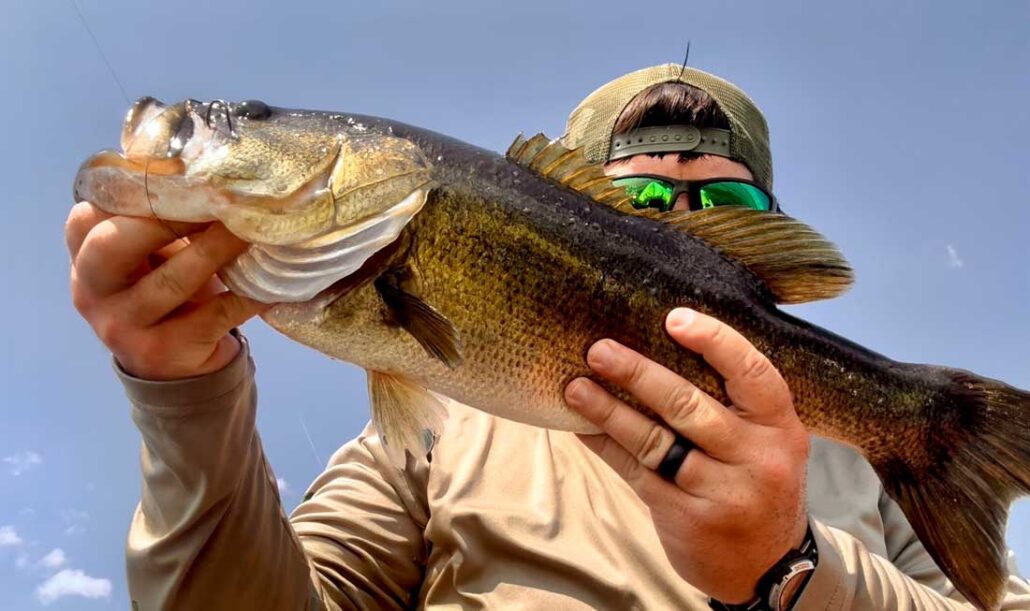
Bass on Speedworm - Lake Toho
Trip Change-Up: Avoiding Headwaters
Originally, I had planned to do a jerkbait showdown at Headwaters Lake. But that plan changed when I saw a news story that morning warning about toxic algal blooms on the lake. The Florida Department of Health advised staying away—and since kayak launching usually means wading in, and my hands are usually cut up from bass lips and hooks, I decided to steer clear. Algae blooms give me headaches and nausea anyway.
Instead, I slept in, played some video games with my sons, ate a bowl of Fruit Loops, and hit the road after lunch. I launched from Whaley’s Landing in St. Cloud around 2 p.m., fished until 6, and got home with enough time left to hang out with the family.
Soft Plastics Recap
My first six bass were on weedless, weightless jerkbaits. I rotated between two:
- Fish or Die Warbird in Liberty Tree (Watermelon Red)
- Bitters Skip Shad in Houdini (Copperfield)
I fished them on 10 lb braid with a Yo-Zuri Pink fluorocarbon leader. I like the pink in high sun—it supposedly refracts less light. Whether that’s true or not, the fish bite when it’s tied on.
With the sun high and the heat heavy, I slowed my retrieve: cast, let it settle for 10–15 seconds, jerk-jerk, pause. Every bite came on the fall. I’d start to pick up slack, and feel weight.
I’ll do a full jerkbait test soon, but spoiler alert: both baits caught fish. Seven total between them, with the Bitters Skip Shad edging ahead by one fish before I ran out of Houdini color.
Speedworm Steals the Spotlight
Once I switched to the Bitters Vibe Speedworm, it was game on. Key setup:
- Rod: 7′ Bass Pro Fish Eagle (budget-friendly and sensitive)
- Reel: Bass Pro Mega Cast (still kicking 2.5 years later)
- Line: Reaction Tackle 20 lb Moss Green braid
- Rig: 3/0 EWG, 3/16 oz tungsten weight, pegged
The trick was to slow roll the bait through hydrilla. Feel it bumping. If it gets stuck—rip it free and let it fall. A lot of bites came on that reaction drop.
The colorway—Okee Candy Gold—was picked by my son during our recent Fastfood Bass Challenge. He said it looked like Watermelon Candy with gold flakes. Good eye, kid.
Bitters plastics are soft and get torn up fast, but you get 20 for 7 bucks. They’re salted and coated in pig fat too—which, frankly, speaks my love language.
Favorite Bass-Specific Casting Setup
This rig is for bass only. No saltwater use. The rod has tiny guides that don’t play well with leader knots, so I stick with straight braid.
- Rod: Bass Pro Fish Eagle, 7′ Medium Heavy
- Reel: Bass Pro Mega Cast
- Line: Reaction Tackle 20 lb braid
It’s an incredibly affordable combo that handles speedworms, swimbaits, and anything that needs accuracy and power to fight fish out of cover.
Final Tally
- 7 bass on jerkbaits (weedless, weightless)
- 12 bass on speedworm, 3 solid fish in the mix
Closing Thoughts
Thanks for reading, Spacefish! If you caught the cover photo, you saw me rocking my new brown Fish Skinz shirt, featuring a sick largemouth-and-frog design. Picked it up at Kayaks By Bo over on 520 in Cocoa. Awesome spot—tons of kayak gear and Fish Skinz apparel.
Stay safe this summer. Watch for storms, hydrate constantly, and be aware of gators—it’s mating season. Also, keep your eyes peeled for aggressive water moccasins. I had one swim right at me yesterday on Toho and had to pedal away fast.
Until next time—tight lines and ripped lips!
by Knox Robinson
Spacefish Prostaff
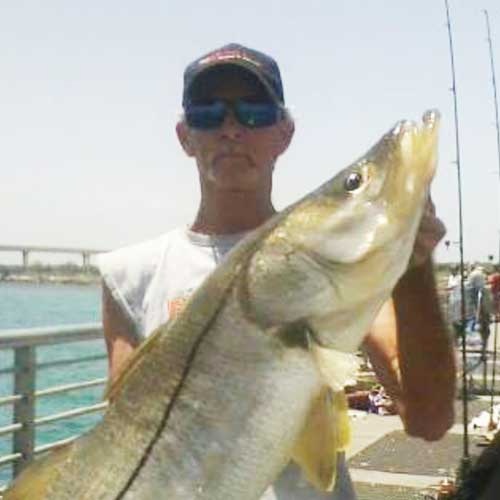
Snook Season CLOSED!
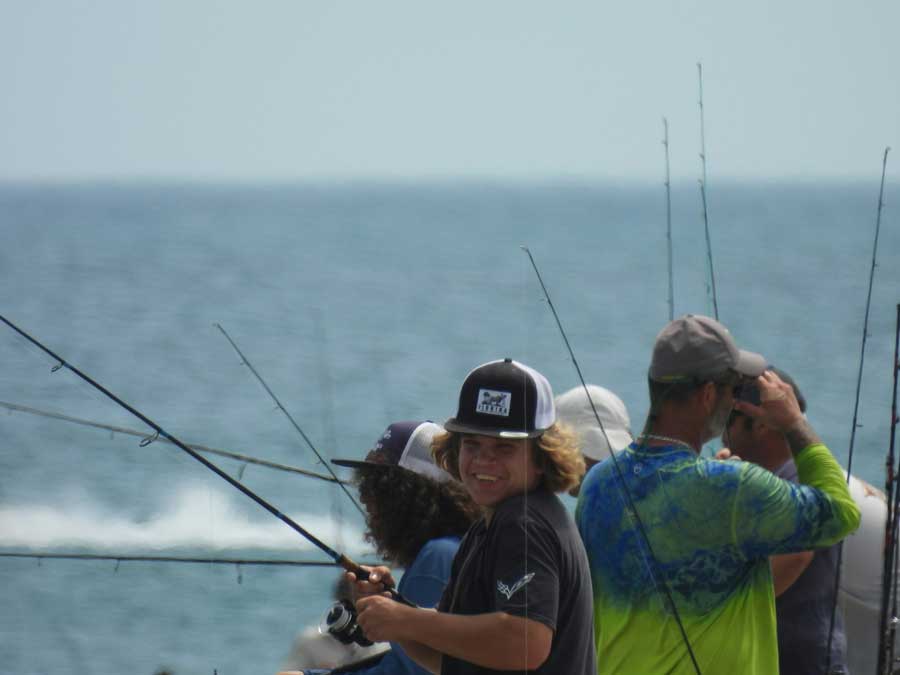
A happy angler at the south jetty on Friday.
Good morning all my Sebastian Inlet fans! I hope everyone had a great weekend despite the afternoon rains. This week is supposed to be about the same, so get out early. Lets start off this report with some good news, no the jetty isn’t opened back up yet, but as of last Saturday the T-Dock is finally opened back up! Lol. So here we go with the report. Note, snook season is now CLOSED until September 1st.. Catch and release only!!
North Side
Over here the fishing has been kind of slow still due to the restricted access of places to fish. On the outgoing tide fishing has been slow, most of the action has been on the incoming tide along the rocks west of the tide pool. Small mangrove snapper and sheepshead are being caught on live and dead shrimp. Up under the bridge there have been some small snook being caught on live majorra, if you can find some. West of the tide pool along the mangrove shoreline area there are some snook being caught also on live baits. Also some sheepshead and snappper are being caught as well. Live of dead shrimp.
South Side
This side has been where most of the action has been, mostly on the incoming tide. At the tip it has been all about the pompano being caught on small goofy jigs. They are still around because the water is still cool enough for them, plus it has been pretty clean, which they like. The snook bite had been pretty good too for those fishing live majorra, shrimp and threadfins. Most of the fish have been under slot size, but a few keepers were caught. The boaters fishing the area have been doing well. As mentioned, snook season is now CLOSED until September 1st, catch and release only! The outgoing tide on this at the tip of the jetty has been producing black margates, lookdowns, nice sand perch and a few whiting and pompano on sand fleas and cut shrimp. Jack crevalle and blue runners and some small bluefish round out the species being caught on small jigs and spoons.
T-Dock Area
Back here there have been some bigger snook being caught on live majorra, shrimp and croakers, incoming tide. Now that the T dock is open back up, expect the snapper and sheephead bite to pick up fishing around the pilings on dead shrimp and cut baits. It’s the time of the year for them. Either tide is good. Also expect to see some spanish mackerel to start showing up with all the tiny minnows around the dock. Very small jigs and swim baits will attract a bite from them. Jack crevalle and bluefish are possible as well.
Surf Area, both sides
The south side has been where the action has been, slow, but there has been fish being caught. Pompano, whiting and bonnet head sharks are being caught, along with a few bluefish that are still around due to the cooler water temperatures we still are seeing. 77 as of this report. Sand fleas and shrimp are the baits of choice. Surf on the north has been pretty slow due mostly to the water being low tides in the morning. Just isn’t enough depth to bring the fish in. It’s been clean though. There hasn’t been a lot of mullet running the beaches like there was, but be on the lookout for any and there might be snook, tarpon and big redfish around them for some action.
Well, that’s it for this week, wish I had more, but when the north jetty opens back up, it will add to the action, since that is where the majority of the action is this time of year. Have a great week everyone!
by Wayne "Snookman" Landry
Sebastian Inlet State Park | (321) 724-5175
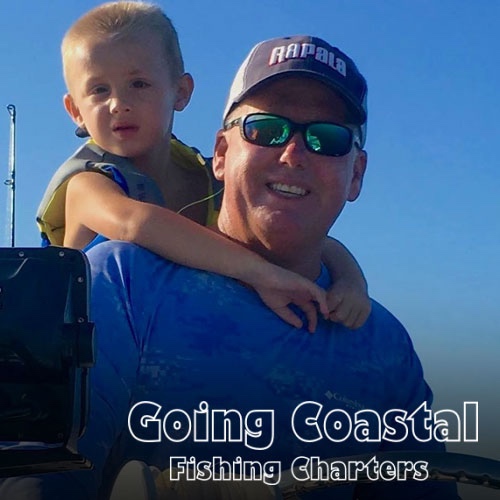
Good Fishing Inshore & Off the Beach
Good week fishing, inshore, and off the beach, but a slow end of snook season in the lagoon. Got some over slot fish and a few other slots but the slot size fish weren’t as cooperative for us. Live bait was the best bet but artificial worked early morning specifically top water. We found some nice schools of jacks along the beach as well as some big fish in the lagoon. The fish on the beach were pretty finicky and the ones we caught in the lagoon were on live bait. There’s a lot of little sharks along the beach as well as some tarpon, but not as much bait as we should have at this time.
As we get more rain, it should push more bait out of the creeks and the lagoon and push some more bait inshore. Looking for more opportunities in the near future with schools of tarpon as well as bonito crashing on the bait pods.
by Capt. Glyn Austin
Going Coastal Charters | (321) 863-8085
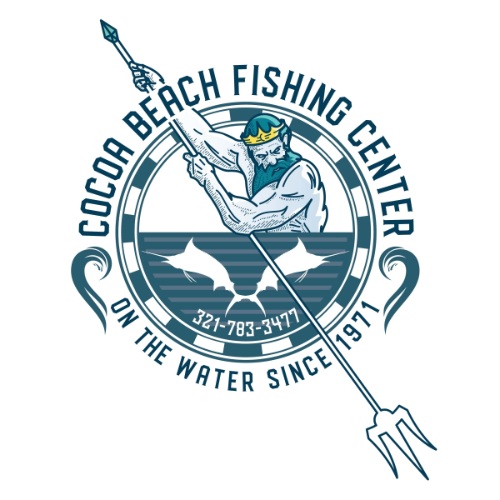
Summertime Fishing
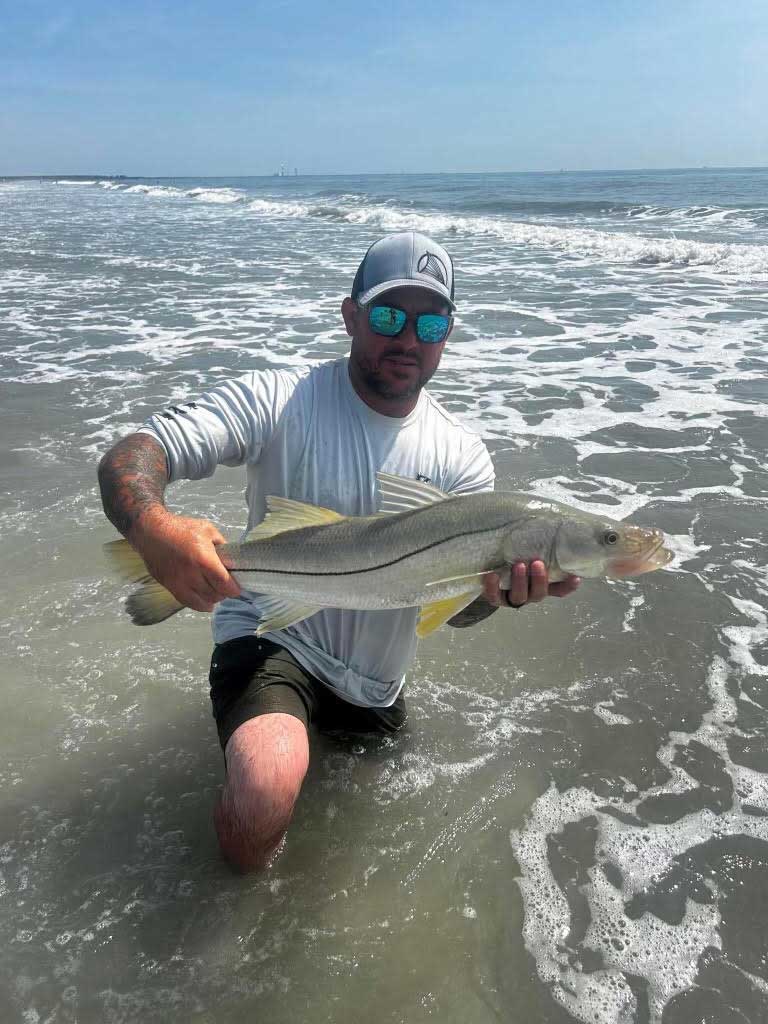
I hope everyone is doing well and had a wonderful week! The fishing along Cape Canaveral and Cocoa Beach has still been hit or miss. A few whiting, palometas, black drum, and sharks have been chewing. The weeds have been patchy in areas, but for the most part, it’s been fishable. The waves have been relatively calm compared to a few weeks ago, and we’re starting to see hotter days followed by afternoon showers.
This week, the waves are expected to stay calm, and the winds will be fairly light—ranging from about 5 to 15 knots most days. Just keep an eye out for those sneaky storms—they can pop up out of nowhere, haha.
The most popular rigs have been ones with white floats, pink floats, or no float at all. There hasn’t been a need for sputnik weights lately—just 3–4 oz pyramid sinkers have done the job. We’ve got Blue Magic shrimp back in stock, and it’s been the best bait by far. Just use small pieces about the size of your thumbnail—and please, please, please peel your shrimp. It makes a world of difference!
Hope everyone has a great week! Tight lines!
by Nik Kaldor
Cocoa Beach Fishing Center | (321) 783-3477
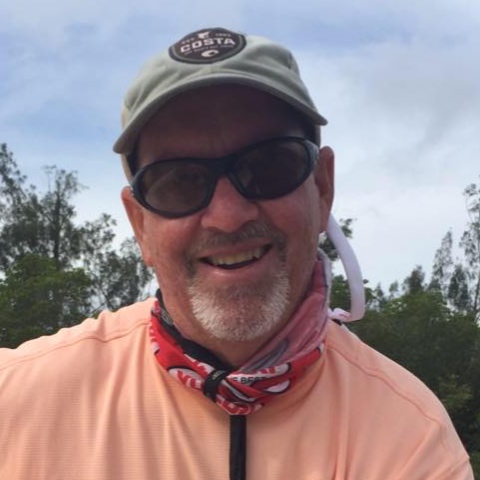
First Time in Freshwater!
Great week for fishing last week. Monday was my first time taking my grandson fishing in freshwater. We headed to the Stick Marsh hoping for his first bass to be caught.
Our bite was very slow for the both of us which made for a not so day of catching but my mission was accomplished with him landing his first bass throwing a wacky work in the stumps. He was excited to see alligators freely swimming around and when they started to make their growling noises the look on his face was priceless.
The next day once again back on Stick Marsh with my friend that I fish with once a week and once again it was a grind with only 12 bass to the boat. I really thought a new moon would have created a better bite for us, but it just didn’t happen. Friday everything changed from fishing to catching to end our week. My mission was to bring a fly rod and maybe get a bass if at all they were willing to bite better. My first spot I always stop at on Stick Marsh didn’t give up a fish, so I moved on. In recent outings, I’ve been watching lots of bird activity along one of the shorelines so with the correct wind, off I went to see if it was holding fish.
Once I idled into the spot, I made my first cast throwing a Yo Zuri Pencil lure that has a “Walk the Dog” style to it and after a few twitches of my rod tip it was blasted by a bass that after getting it to the boat was about 4 pounds. I released it back to the water and made another cast close to where the last fish came from and once again another big blow up and another bass of similar size made it to my boat. I quickly pulled out my fly rod to see if I could get one fish at least close to the same size as the other two and was gifted with not just one but 20 more!
I started with a Double Barrel popper pattern but lost it on my third fish after it wrapped me around a stump. I tied on a Stealth Bomber pattern and proceeded to catch away. Then the sun came out from behind the little cloud cover I had and the wind made a slight direction change and the bite was over, just like that. It was a great end of the week for fishing but on a sad note my trim and tilt switch went out on my boat so now it’s back to Boathouse Discount Marine for the fix.
by Terry Lamielle
| (321) 537-5346
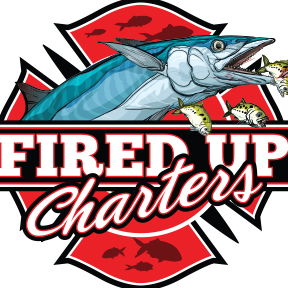
Fishing Still on Fire Offshore!
Not much has changed since last week and that’s a good thing. The fishing is still on fire! We are still catching bait in the same general areas which are the basin in Port Canaveral, the bite and along the beach south towards the pier and brown condos. We haven’t had to push beyond the reefs, that’s where all of our action has been and we are catching a bunch of different species. Wahoo, kingfish, cobia, mahi, blackfin tuna, jacks and cudas we all caught this week.
There is a thermocline so the action on the bottom is a little slower but hopefully that will move off sooner than later and things will heat back up targeting the bottom.
by Capt. Chris Cameron
Fired Up Charters | (407) 222-3573
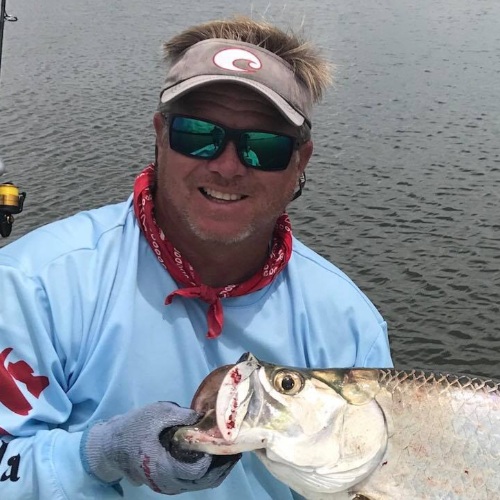
Mosquito Lagoon — OUT; Nearshore — IN!
Kingfish along the beach and outside the inlet has been hot lately with some 30-pound kings being caught. Shark fishing is going off, especially behind the shrimp boats. The Mosquito Lagoon is still fairly dirty from the algae bloom, but the nearshore and offshore fishing has been on fire. I have dates available in June and July so give me a call at 386-295-5991 to book a trip.
by Capt. Mike Mann
Fat Fish Guide Service | (386) 295-5991
🎣 Capt. Real Estate’s Catch of the Week
6519 June Drive, Cocoa, FL 32926 – $339,000
3 beds, 2 baths, 1,239 SF
Ahoy, Spacefish crew! Capt. Real Estate here—your trusty guide on the high seas of home buying. Each week, I’ll be scouting the best waterfront listings where the fishing’s hot and the vibes are even hotter. Think of me as your charter captain to the dream angler’s lifestyle—no fish tales, just fine homes.
It doesn’t get much fresher than this! Do you enjoy freshwater fishing for largemouth bass, speckled perch, catfish and American shad? If so, then look no further than this 3-bedroom 2 bath hidden gem located on a deep-water navigable canal in Cocoa that leads to Lake Poinsett and the St. Johns River. With a little TLC this diamond in the rough is an angler’s dream!
Drop me a line if you’re ready to hook this one before someone else reels it in.
Tight lines and smooth closings!
Contact the Capt'n

Whether you’re interesting in seeing this property, or just looking for an agent to assist you with buying or selling real estate in Brevard County, call the Capt’n at (321) 289-0902 or send a message through the button below!
Damon Pullias | License: #3253068 | Broker: #BK200754
by Damon - Capt. Real Estate
HomeSmart Coastal Realty | (321) 289-0902

Bait Fish Hard to Come by @ Inlet
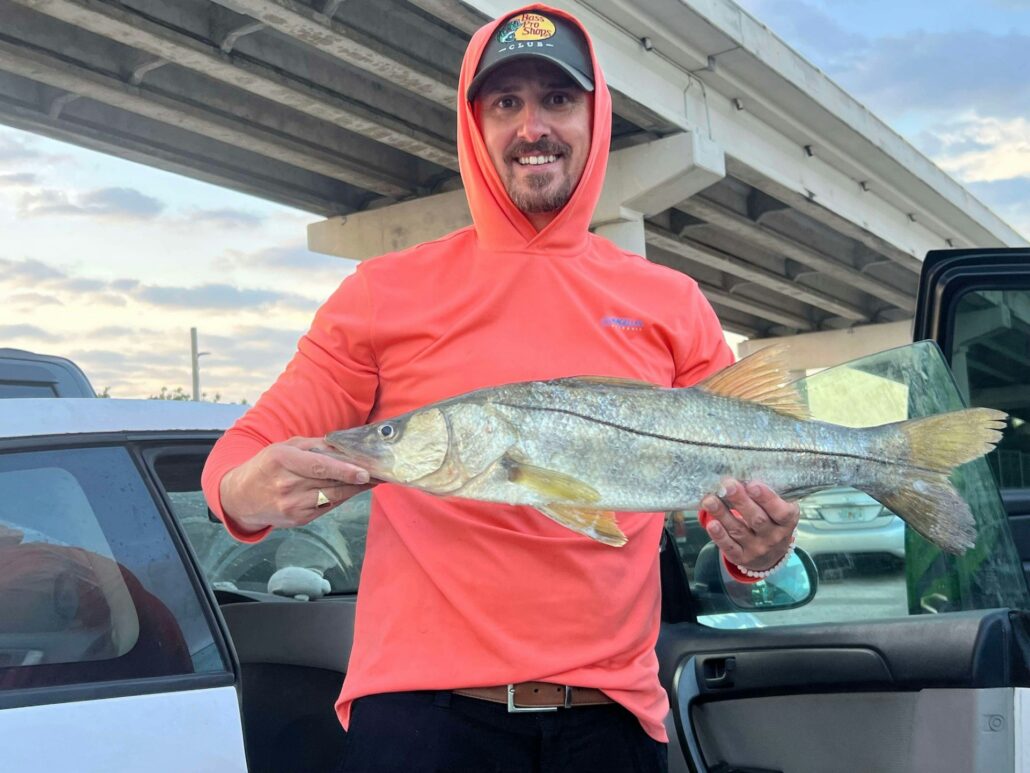
An elusive “slot” snook Friday evening at the south jetty
Good morning all you Sebastian Inlet fanatics, I hope you all had a great and safe weekend, despite the afternoon thunder storms. Weather was nice, water was nice, but the fishing was a bit slow for the most part, no baitfish anywhere to be found, and that made it kind of tough, but there was some majorra, you just had to search and work hard to find any. There were some fish being caught, just not like it should be for this time of the year. The water was pretty clean for the most part until the winds switched and became SSE, which in turn dirtied it up on the south side. The seaweed was still around, but nothing like it was, also the water has warmed back up to 78 as of this writing, which for this time of year should be in the low 80’s. So that’s that, here we go with the action we did have.
North side
The action over here has been up under the bridge on the rocks on the outgoing tide, a few anglers who were able to find some majorra were catching some small undersized snook, and a couple small catch and release redfish. Remember in this area, you are NOT permitted to go past the fencing with the no trespassing signs just east of the catwalk, it is a designated construction area. Back towards the back, west of the tide pool on the incoming tide a few snook have been caught fishing live majorra, and back along the mangrove shoreline. That’s pretty much it for this side since fishing access is limited.
South side
Over here all the action has been at the tip of the jetty on the outgoing tide, cut shrimp was attracting bites from black margate, spot tail pins, small whiting, and some very nice sand perch. I also did get a report of some flounder being caught as well, but didn’t hear if they were keepers or not. The incoming tide has been pretty slow with the dirtier water, but there were a couple undersized snook caught on live croakers. That’s pretty much the jest of it out here.
T-Dock area
Back here the fishing has picked up a bit from what it has been, but with the T-dock still being closed, it is limited. On the incoming tide, and beginning of the outgoing, if you find some majorra, snook are possible. I did hear about a few slots being caught, but I did not see any the entire weekend I was there. Early morning seems to be the time for that. Along the rock shoreline I did see some small mangrove snappers being caught, which this time of year when the water warms up on the intercoastal, they will start showing, plus all the tiny minnows that are around the T-dock attract them. Also being caught back here are sheepshead, and a few black drum, live or cut dead shrimp for the snappers, drum, and sheepshead.
Surf Area, both sides
North side has been pretty slow due to the fact that we have a massive sandbar on that side from the jetty all the way up to the north parking lot which makes finding deep water tough, so not many folks fishing this side. On the south side the water is much deeper, but also much dirtier due to the SSE winds kicking it up. An occasional pompano or two have been caught, along with some small whiting on live sandfleas and cut shrimp. Puffers, catfish, and some pesky bonnet head sharks round out what is happening on this side.
Well friends, that’s it for this week! This week is going to be kind of iffy weatherwise, but if you get out early before the storms, you might just catch some fish. Have a great week folks! Snookman.
by Wayne "Snookman" Landry
Sebastian Inlet State Park | (321) 724-5175
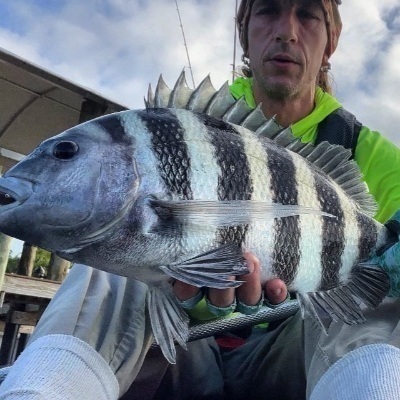
Snook Migration Underway: Tarpon Make an Entrance

This week on the Indian River was incredibly productive! The larger female snook are starting to make their way to their spawning grounds, although many can still be found in the backwaters. While their numbers are beginning to thin out, it’s still a great time to target these fish.
The arrival of summer-like conditions has also brought an influx of tarpon to the area, adding excitement to our fishing adventures. Whether you’re targeting snook, tarpon, or other species, the Indian River has been providing plenty of action for anglers.
If you’re looking to catch some of the larger snook before they spawn, now might be the time to get out on the water. And with the tarpon around, you can bet on some thrilling battles. Get out there and see what the river has in store for you!
by John Page
JP Kayak Fishing and Tours | (321) 345-8388

Kayak Fishing the South Side of Winter Park Chain
KAYAK FISHING REPORT

Pedal. Cast. Smash. Repeat.
Picture yourself pedaling along in your fishing kayak. You’ve just pushed through a beautiful canal lined with ferns, palms, cypress—a true assortment of jungle foliage. You’re feeling pretty good about the soft plastic buzzing topwater frog/gator imitation bait you’ve tied on. You’ve already landed a handful of fish skipping it under docks and along a seawall in the canal.
As you emerge into an open lake, you’re faced with a decision: head due north, or take a left and push west along the south side of Lake Osceola. You stayed north last time you were here—two years ago—so today, you decide to mix it up.
Before you lies a vast field of lotus pads, and just beyond, giant oaks stretch their shade out across the water. The lake is stunningly clear, with pads and eelgrass as the main sources of cover.
You know what time it is. Rudder up. Kick fins latched. Paddle out. You stand with rod in hand, paddle resting across the bow of your trusty steed—the Hobie Outback. It’s quiet. Stable. A true amphibious weapon. Confidence builds.
You rear back and unleash a slip cast way up under the oak shade. Your bait smacks a cypress stump and you burn it back. The ripples grow. You hit the edge where the water deepens and the lotus pads thicken.
Then it happens.
BANG!
Like a small cannonball, an explosion rocks the water. You mutter the sacred phrase under your breath:
“Eat my frog.”
Three words whispered to no one.
You set the hook.
Immediately, you know—it’s a good one. Not a record-breaker, but a solid Florida bass. Then it wraps up in lotus pad stems. Game over?
Not even close.
Moments later, you’re paddling one-handed, half-submerged in belly-deep water, rod in the other hand. You grab the fish. Victory.
Worth it? Absolutely.
But no time to celebrate—you’ve only landed your fourth fish. You’ve got about 22 more before calling it a day.
Let the games begin.
Happy Monday, Spacefish!
This week’s report is all about the south side.
Not that south side. Sure, the new Pope (or as my buddy Bobby Norton says, “Da Pope”) is from Chicago—but we’re not talking about the Holy Father or the Windy City today.
We’re talking about the stunningly gorgeous Winter Park Chain, just north of Orlando.
Launch Spot & Lake Breakdown
For this trip, I launched from Dinky Dock Park
📍 410 Ollie Ave, Winter Park, FL 32789
My goals:
- Complete the Fast Food Challenge from last week’s report
- Catch fish in every lake and every canal on the chain
- Rack up a high number of bites
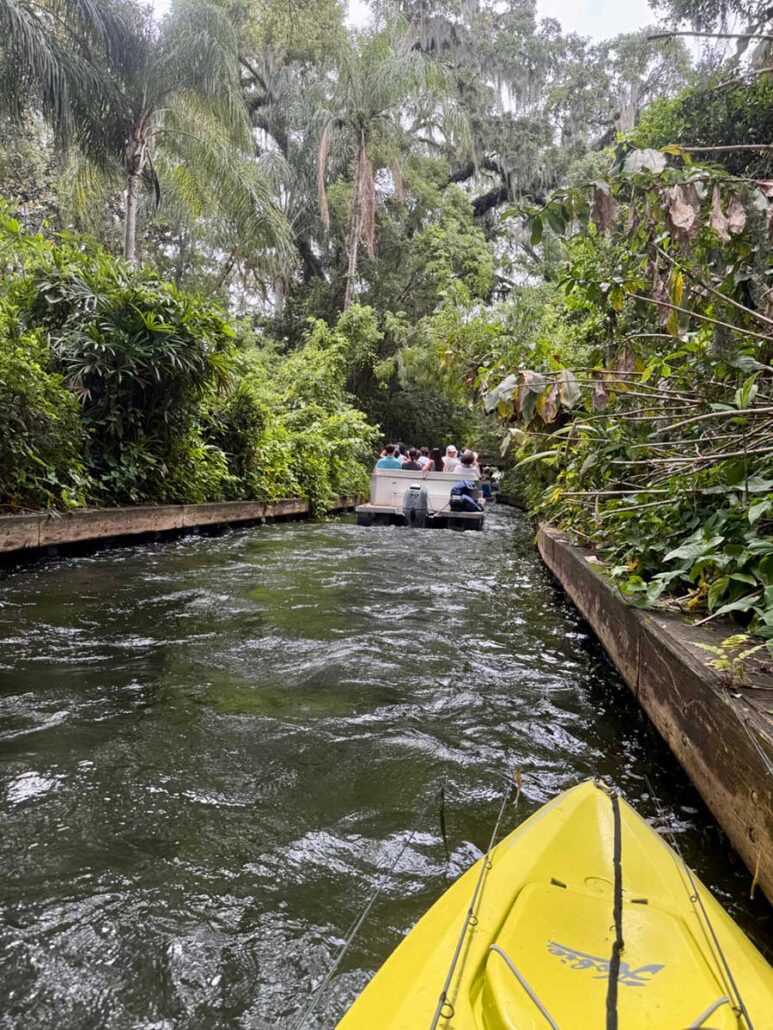
Pushing through the fern canal into Lake Osceola.
I started on the north side of Lake Virginia, catching two bass by skipping the Bitters Buzz’n Gator under docks. Already checked off Virginia, I pushed north through the fern canal into Lake Osceola, spending most of the day there. Later, I punched back through to Virginia, moved south a few hundred yards, and entered the Genius Canal, linking Virginia to Lake Mizell.
Caught one quickly in Mizell. Then another in the canal. At that point, I’d landed 25+ bass, was feeling gassed, and ready to call it a successful day.
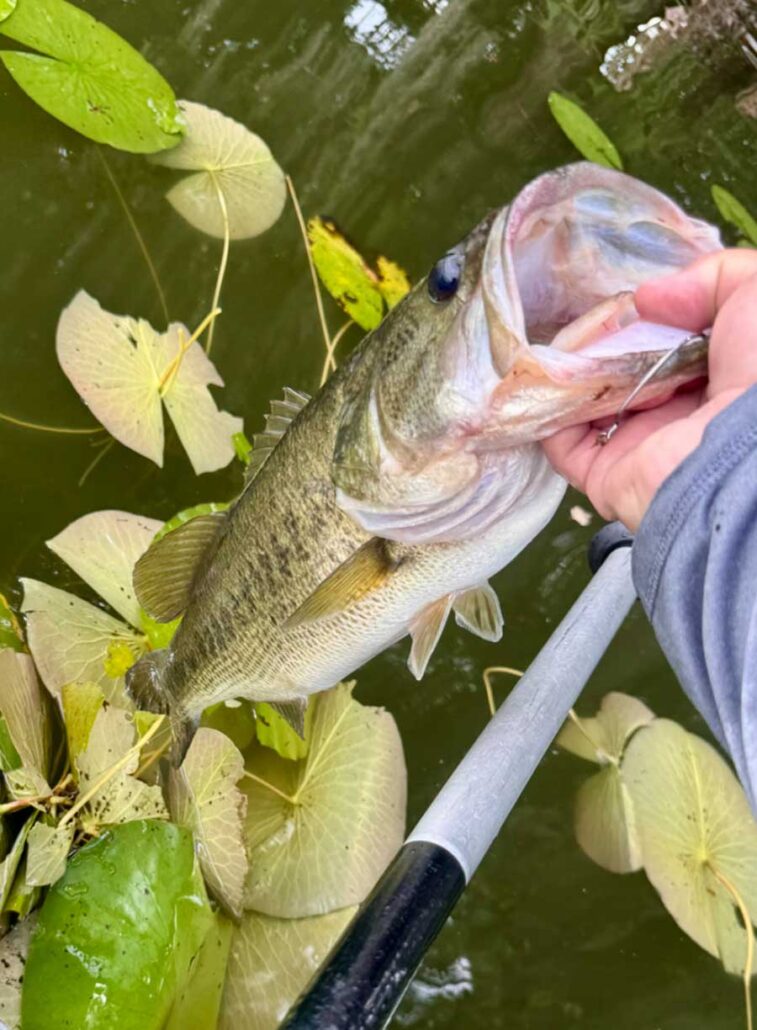
Two Confidence Baits That Crushed
It had been a while since my last dedicated bass trip. I’d been catching bass while chasing tarpon in the backwaters of the Indian River Lagoon—very different from lake fishing.
My approach: power fish with confidence baits that let me cover water and fish all depths. I used two:
- Bitter Skip Shad (Houdini) — rigged weightless & weedless on a 3/0 EWG
- Bitters Buzz’n Gator (Watermelon Red Pearl) — also weightless & weedless on a 3/0 EWG
I started with the topwater Gator, burning it back, skipping it under docks, and buzzing it over lotus pads. It drew exciting surface strikes.
The Skip Shad (fluke-style bait) was the top producer. It skips into tight spots, casts long, and can be worked a dozen ways—twitched, deadsticked, walked subsurface – it really is a dealers choice type of bait.
I love a speedworm (really, really do), but the fluke might be the GOAT—not just for bass, but also snook, trout, and even tarpon.
Results:
- 23 of 26 bass on the Gator and Skip Shad
- 3 on a speedworm
- Sometimes Plan A works. Stick with it.
Gear Talk: Reliable Kayaks & Secret Weapons
As I tell my football players:
“The best ability is availability.”
Same goes for kayaks. You don’t need the most expensive rig—just a reliable one.
For the past 18 months, I’ve been running used Old Town and Hobies from Kayaks By Bo—part of their test fleet. With the money saved, I’ve been able to invest in rigging, customizations, and repairs.
The real MVP?
Andy.
He’s the kayak whisperer. Rudders, cords, pedal drives—you name it, he fixes it.
One reason I love Kayaks By Bo: they’re not just a place to buy a kayak. They’re a family-run operation that offers repairs, rigging, and great service.
Thanks for reading this week’s report. Wishing you calm waters, explosive strikes, and enough good bites to keep you coming back.
Stay safe. Be happy. Go rip some lips.
Until next time—tight lines.
by Knox Robinson
Spacefish Prostaff

Picky Eaters Nearshore

Tyler with his first snook!
Inshore fishing is still really good, but the bite is early. Plenty of snook and some good trout as well as some jacks and a few redfish here and there.
Nearshore waters are warming and the jacks are showing up in good numbers. There are some tarpon around but not that many yet and they are picky. The water off the beach was cold all week and warmed up on the weekend. Both jacks and tarpon were picky but the small sharks were eating well.
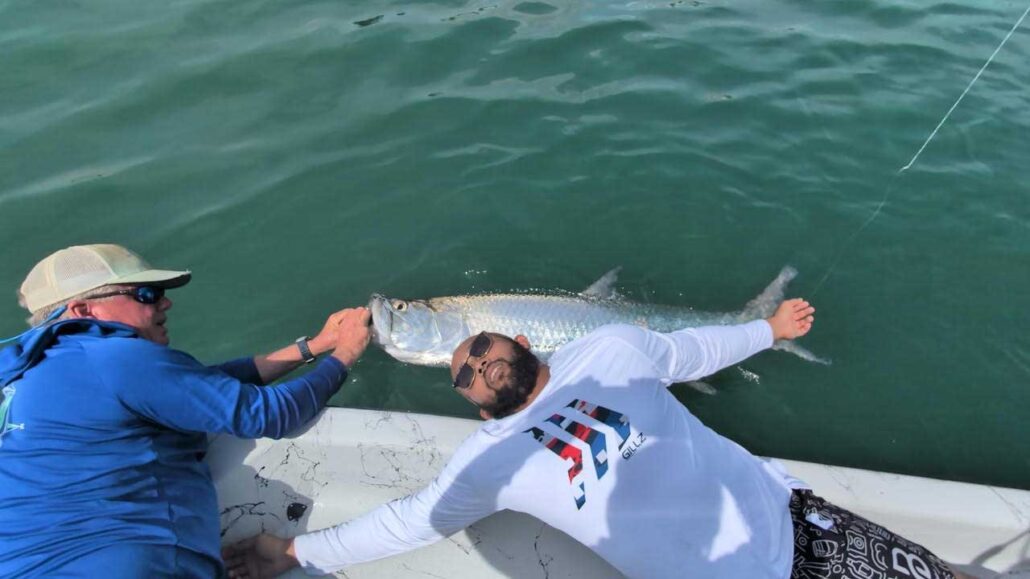
AJ caught his first tarpon off the beach
Kingfish will be showing up on the beach in decent numbers as the water stays warm and the bait stays around. The kingfish will eat both live baits and artificial baits and they will mix in along with the bait schools and even the schools of tarpon. The rain should help the bite a bit as it pushes the smaller baits out of the creeks and lagoon and gets the fish we are looking to catch fired up.
by Capt. Glyn Austin
Going Coastal Charters | (321) 863-8085
CAUGHT ON CAMERA
CATCH A BIG SMILE WITH JASIN YOUMANS DMD!

How To Search The Best Electrical Engineering Building Services
LOCAL EVENTS
FSFA South Chapter Meeting
March 11 @ 7pm
 The FSFA South Chapter meeting is at Front Street Civic Center, Melbourne (2205 Front Street, in Melbourne, next to the Front Street boat ramps, across from Harry Goode’s). Social time starts at 6:30. Meeting starts at 7:00. ROFFS Scientific Consulting is the featured speaker and will be talking about charts, forecasts and analyses for success on the water. Food and drink available for a donation.
The FSFA South Chapter meeting is at Front Street Civic Center, Melbourne (2205 Front Street, in Melbourne, next to the Front Street boat ramps, across from Harry Goode’s). Social time starts at 6:30. Meeting starts at 7:00. ROFFS Scientific Consulting is the featured speaker and will be talking about charts, forecasts and analyses for success on the water. Food and drink available for a donation.
Marine Exchange & Boat Show
March 15-16
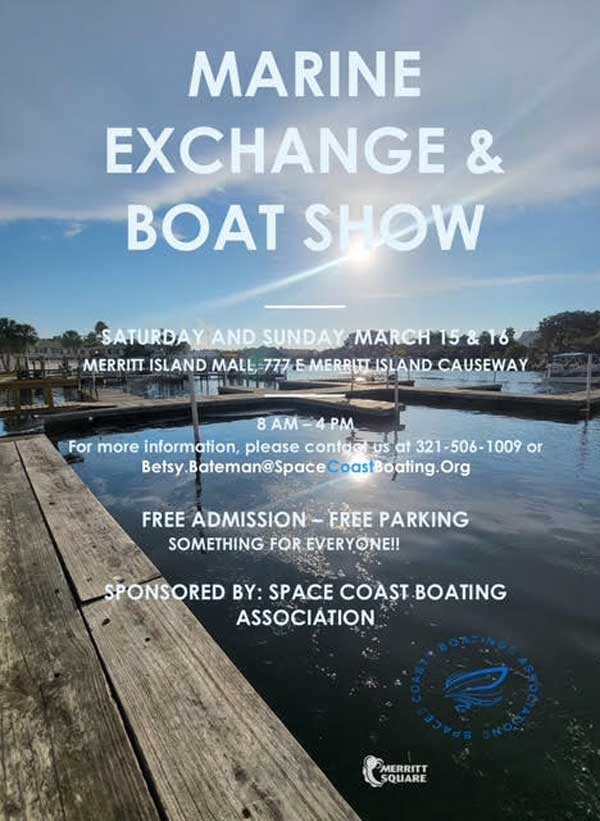
Giant Tent Sale!
March 14-15
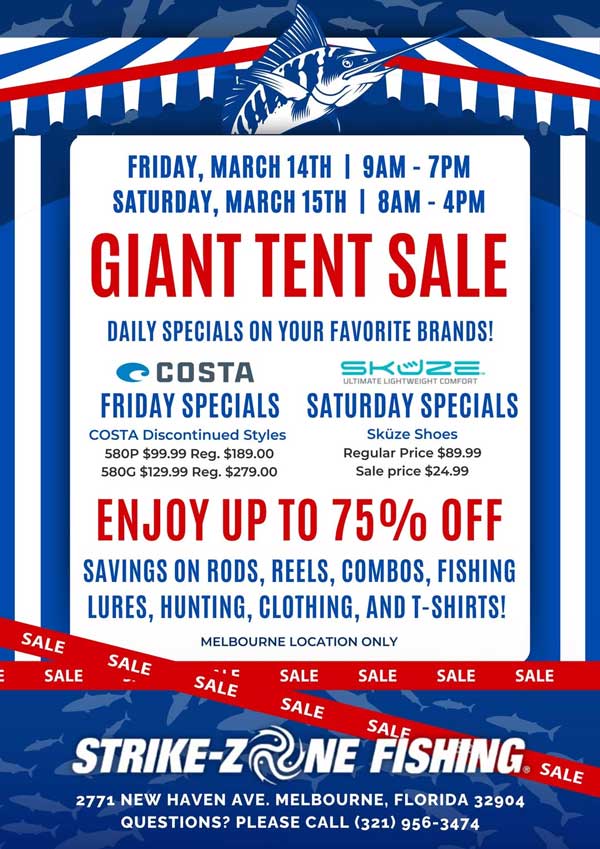
Non-Native Knockout
March 14
5th Annual Dustin and Sawyer’s Non Native Knockout

CFSA Social
March 18 @ 6:30pm
 The CFSA March Social will feature Matt Bunting, a Northeast Florida regional Biologist from FWC. Matt will be presenting on the purpose, goals, study criteria and preliminary updates on the FWC’s Exempted Fishing Permit (EFP) projects.
The CFSA March Social will feature Matt Bunting, a Northeast Florida regional Biologist from FWC. Matt will be presenting on the purpose, goals, study criteria and preliminary updates on the FWC’s Exempted Fishing Permit (EFP) projects.
WHERE
The CFSA social is held at the following location:
Mud Hole Custom Tackle, Inc.
2133 Component Loop Suite 1001
Oviedo, FL 32765
SEE YOU NEXT TUESDAY!
Don’t forget, if you’ve been fishing, we’d love to hear from you!






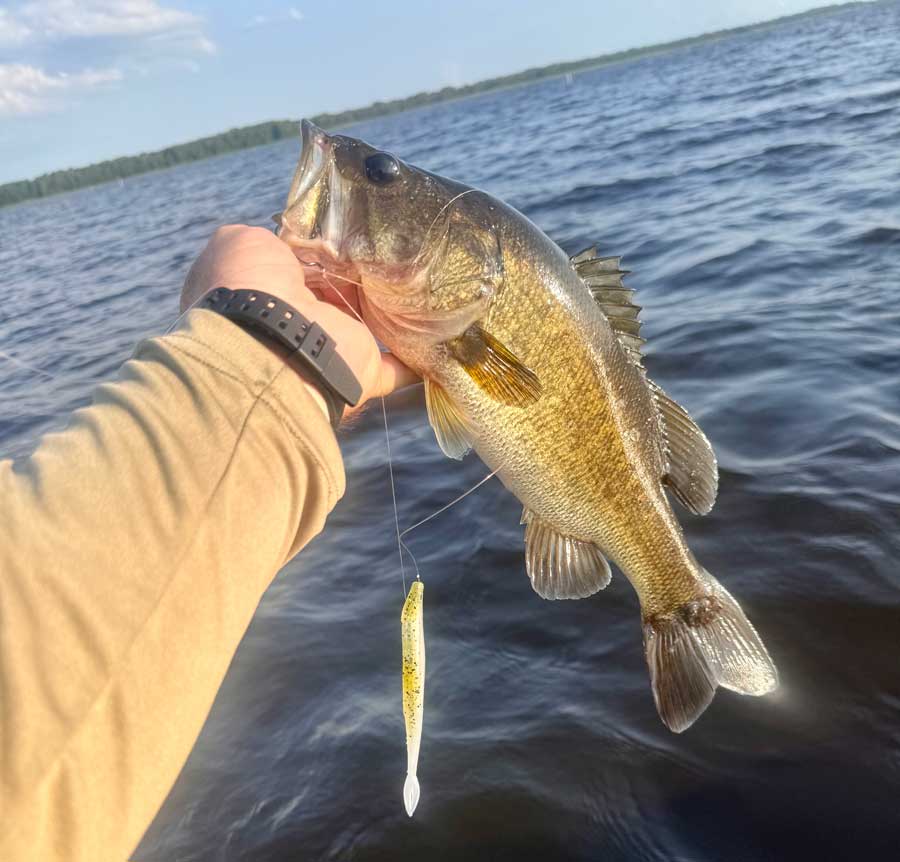
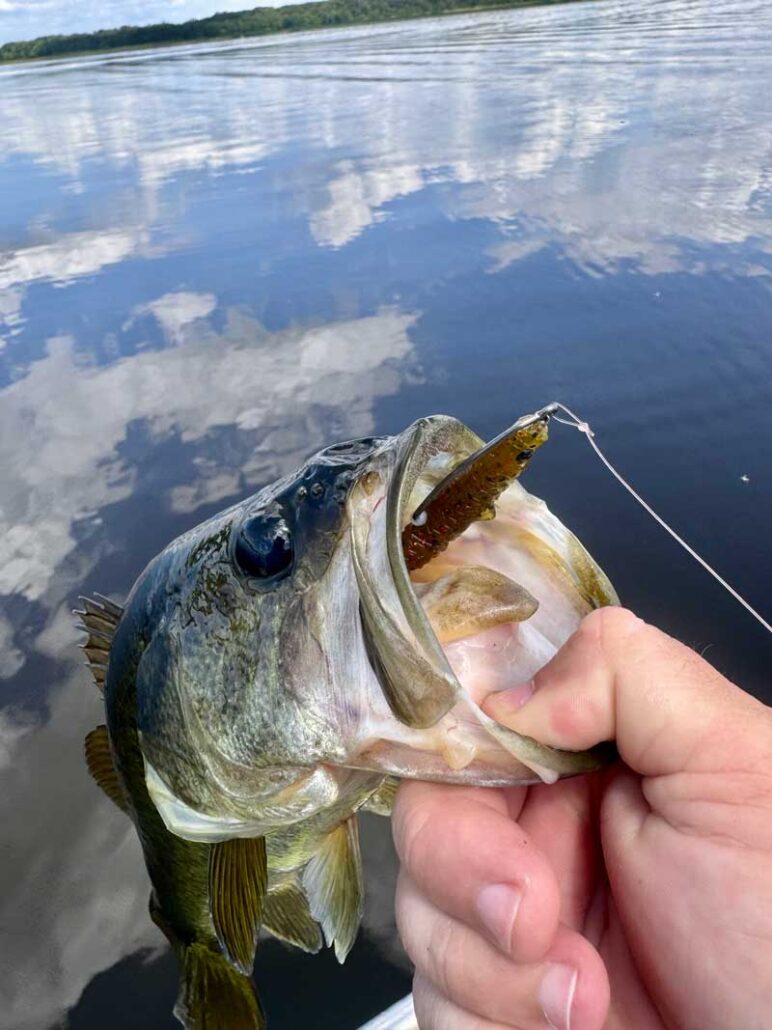
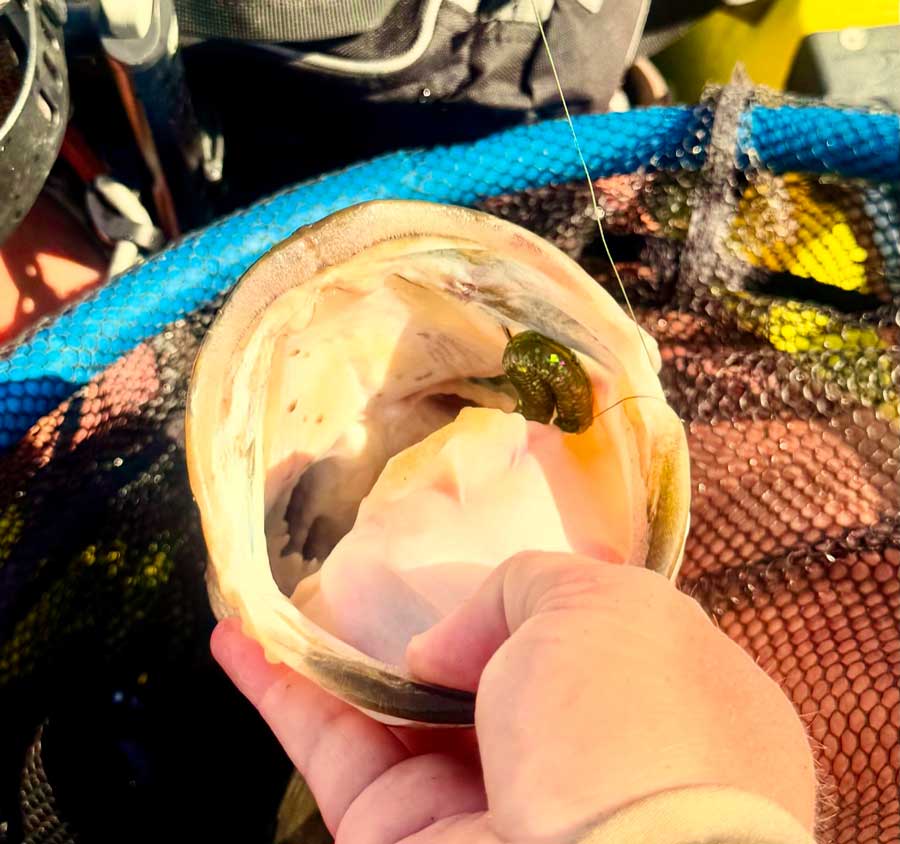
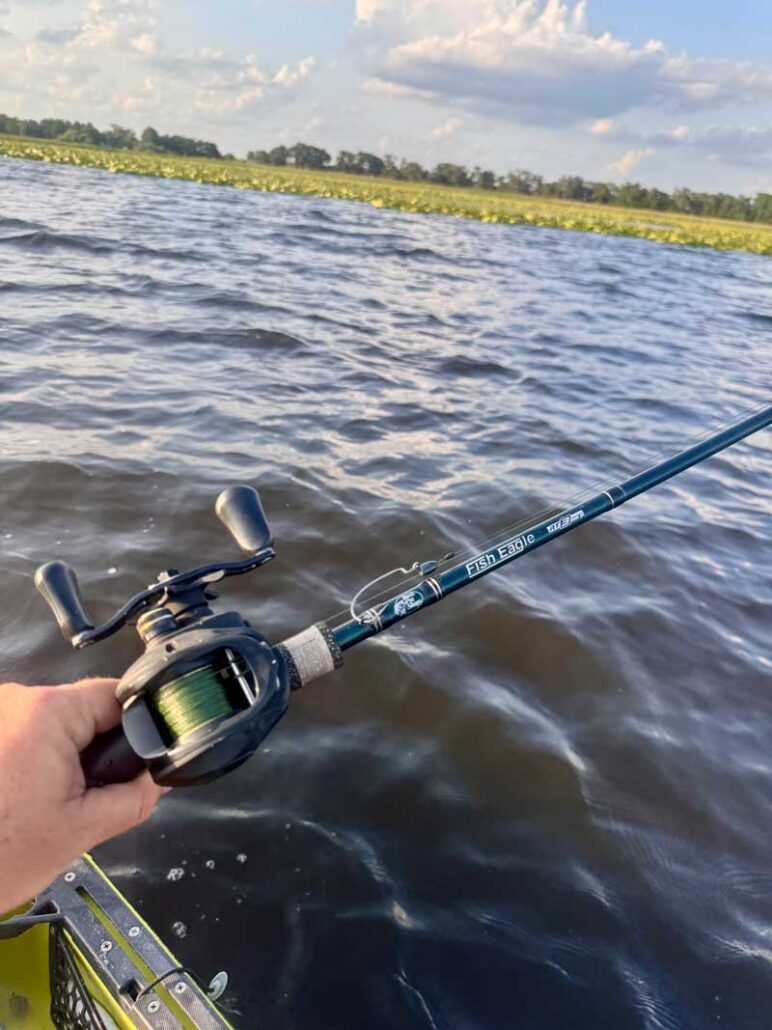


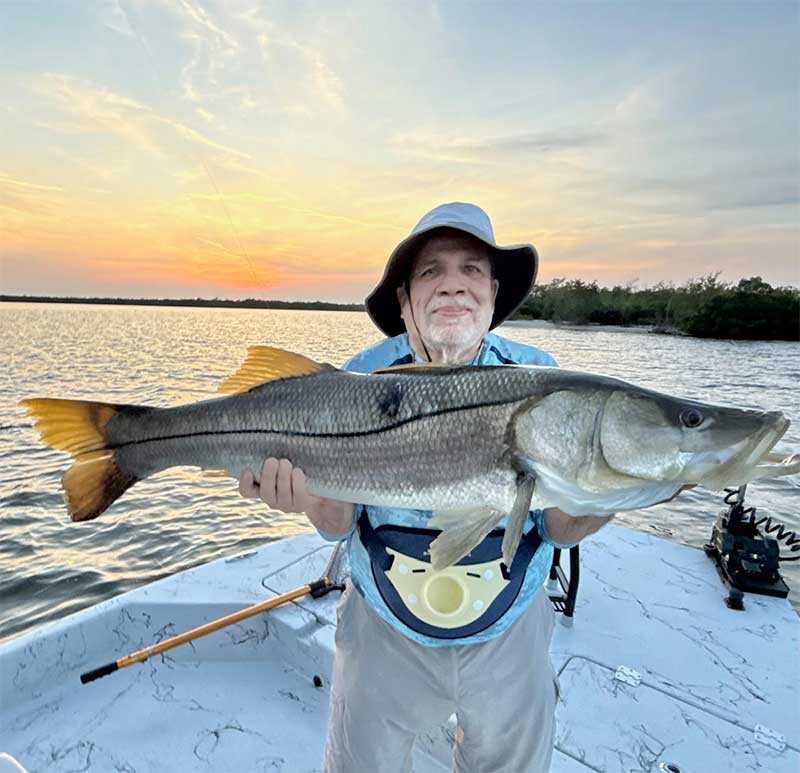
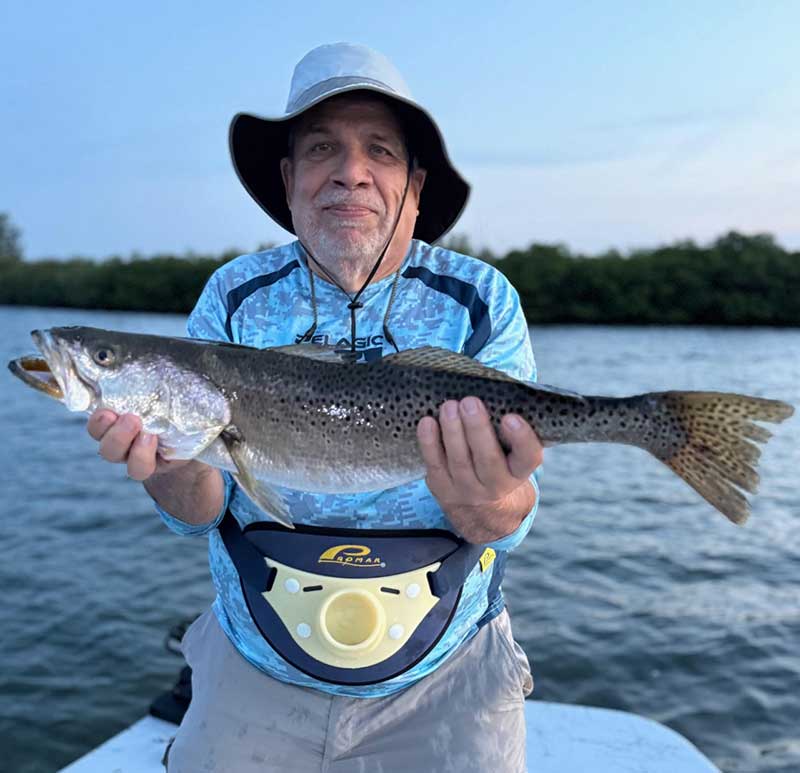
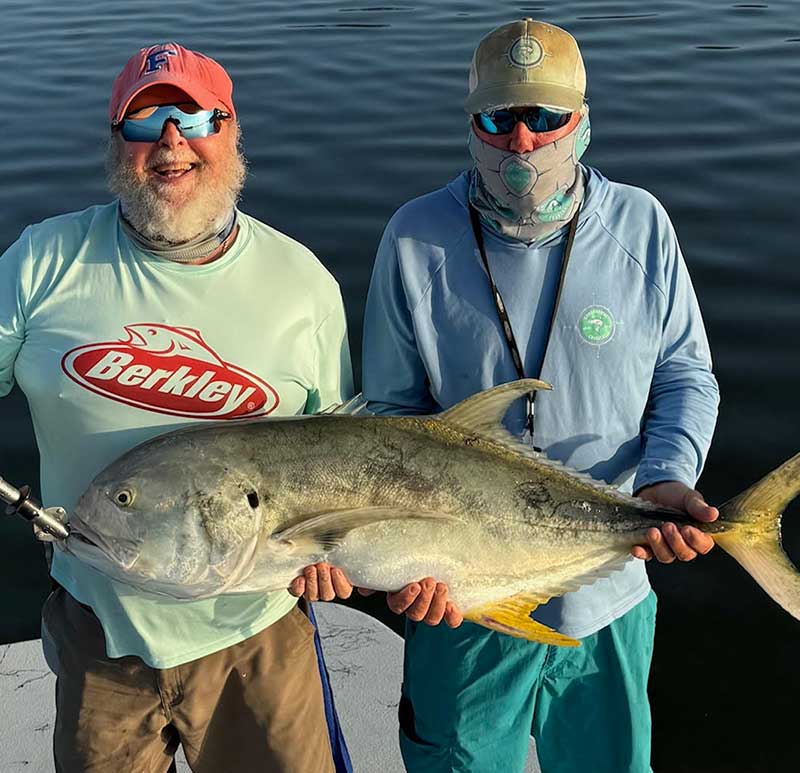
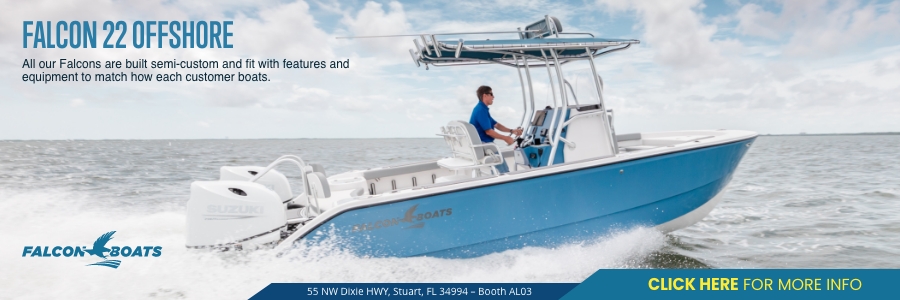

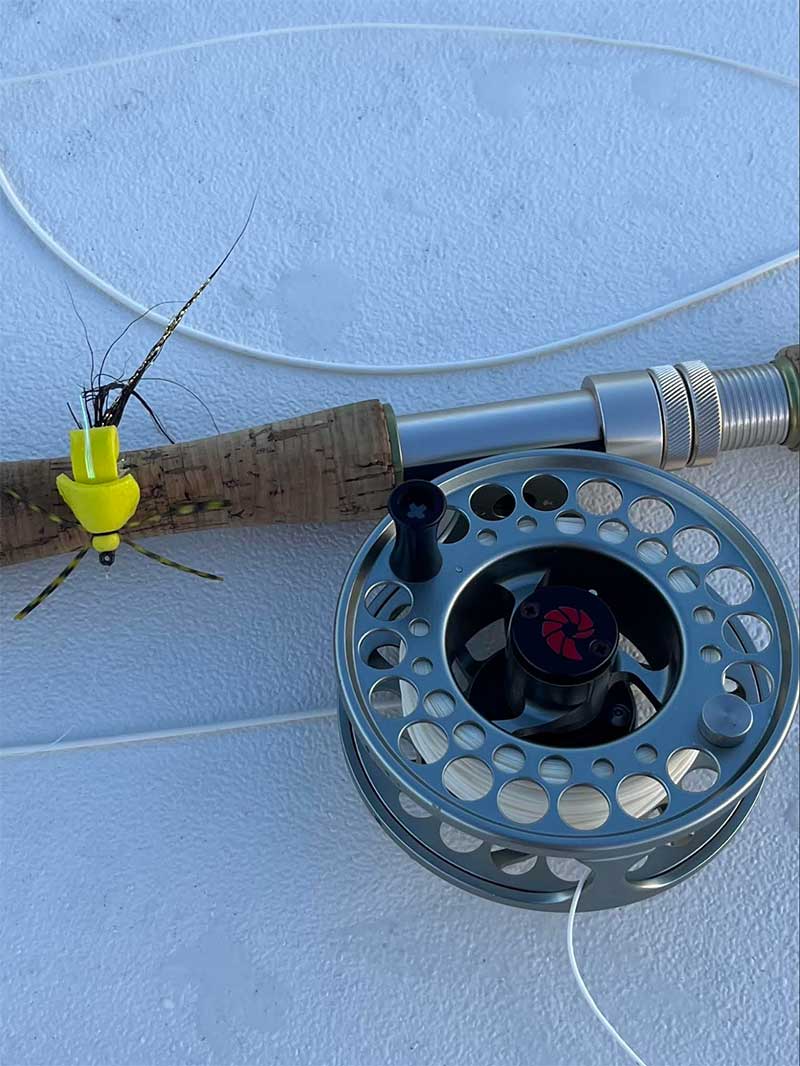

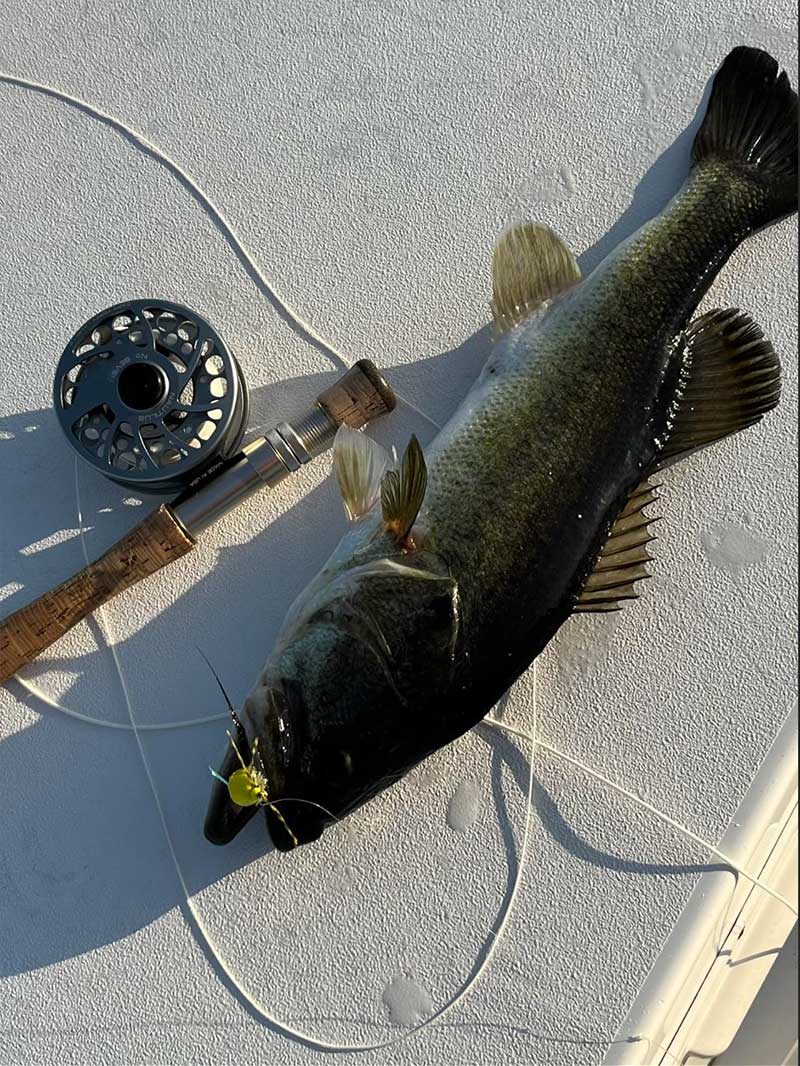
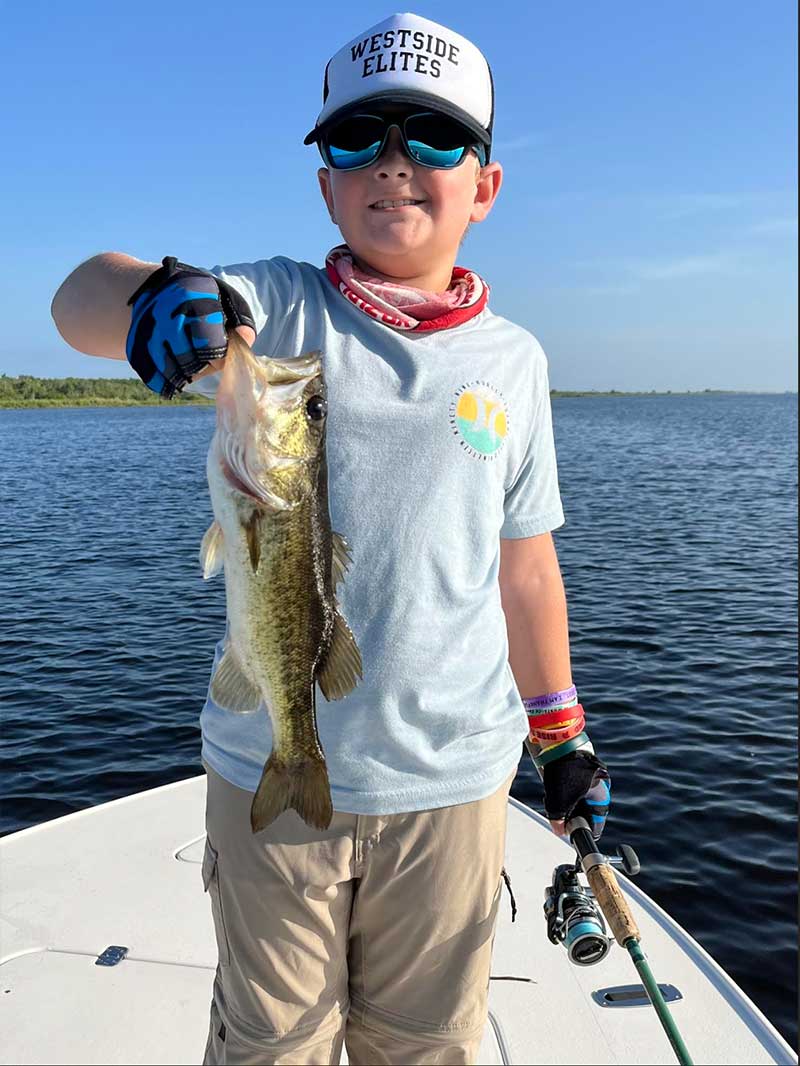
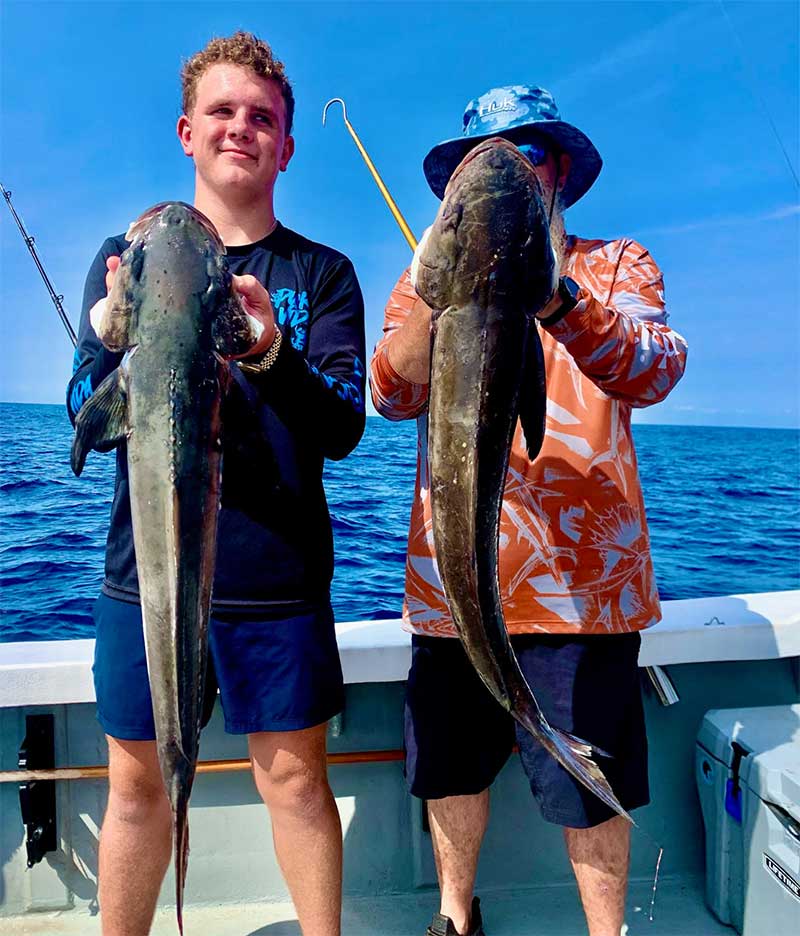
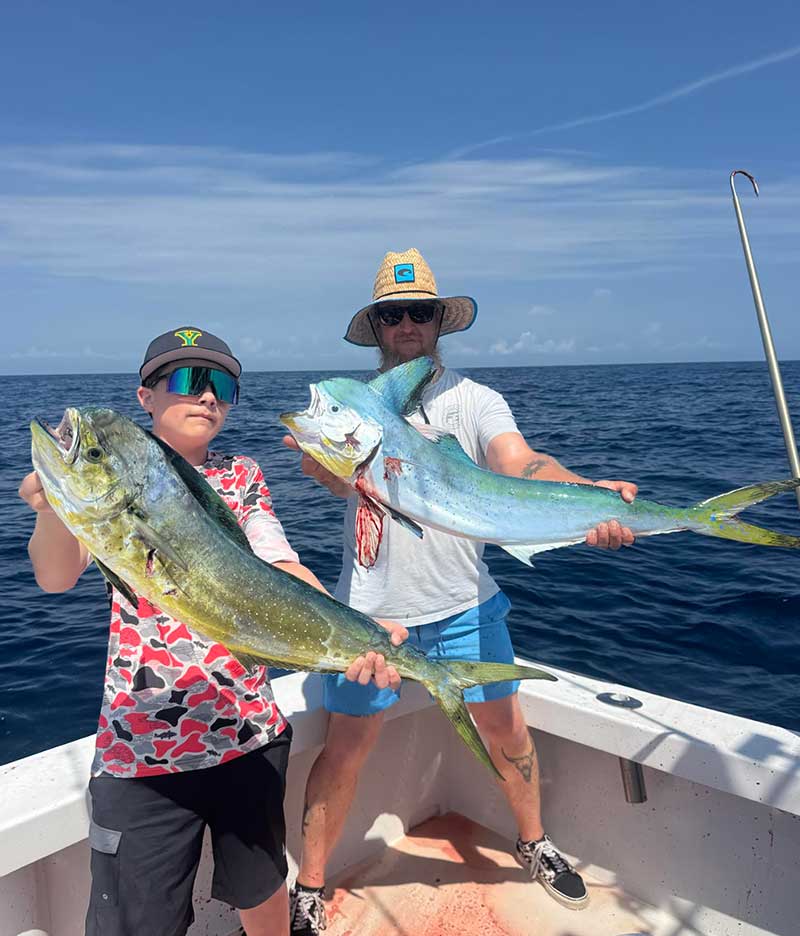

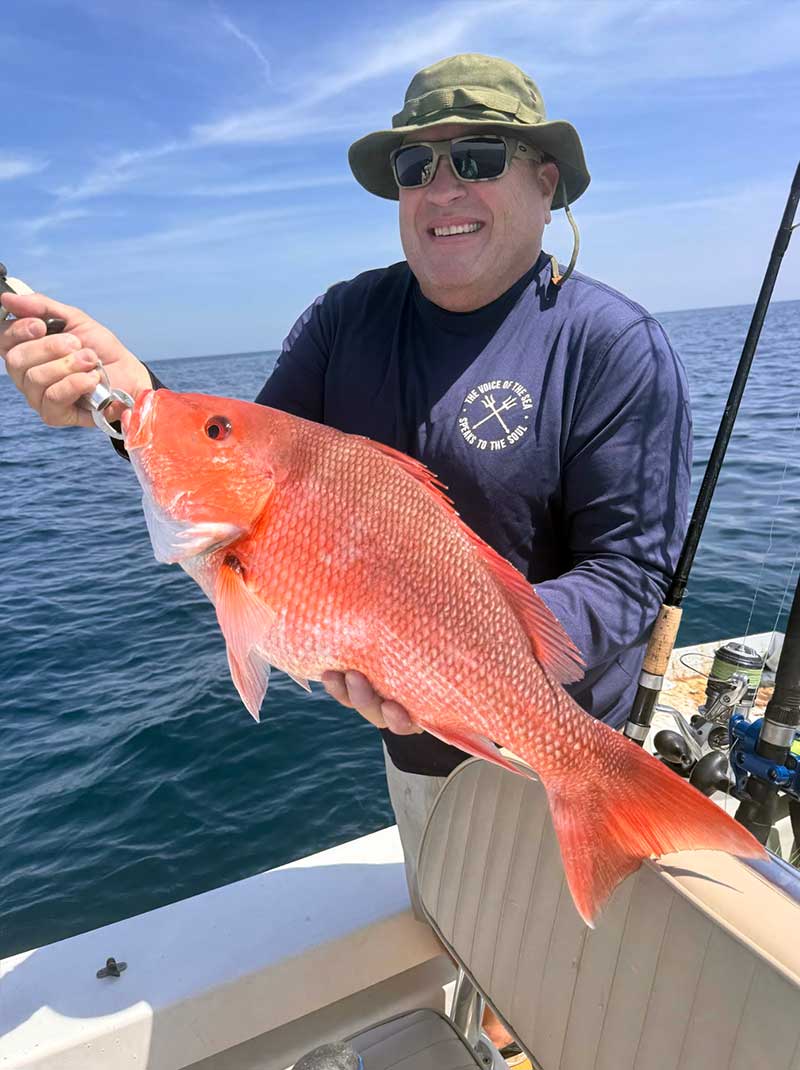
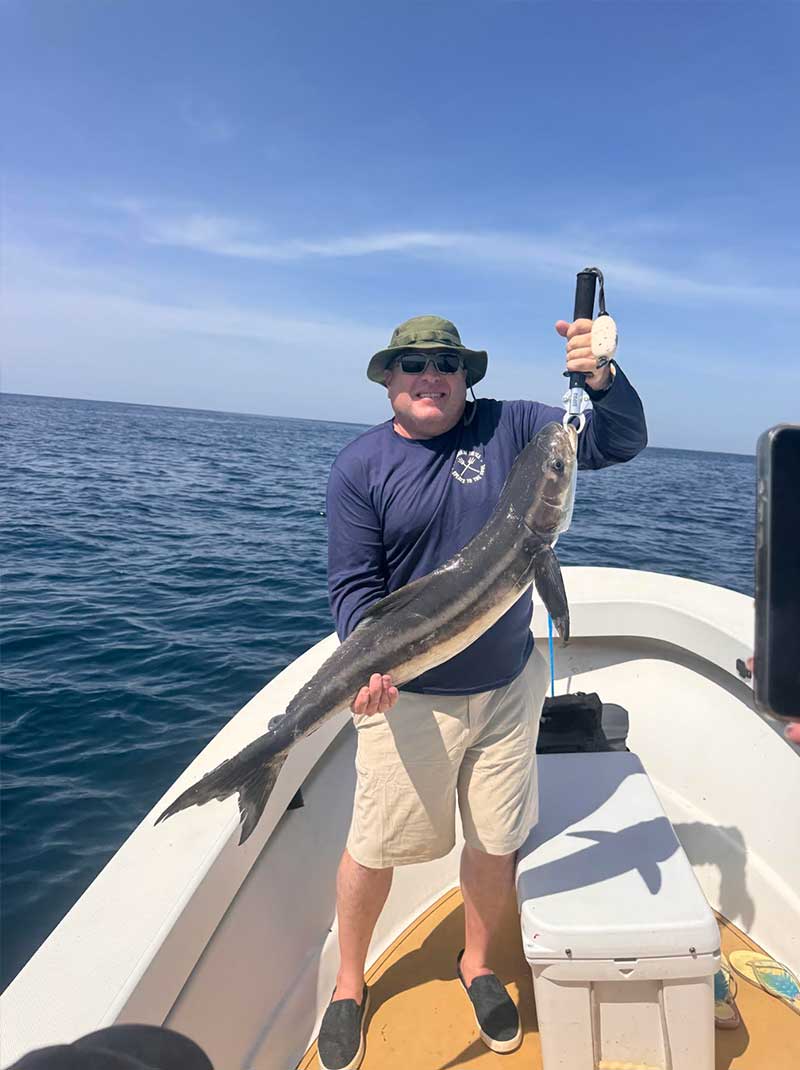
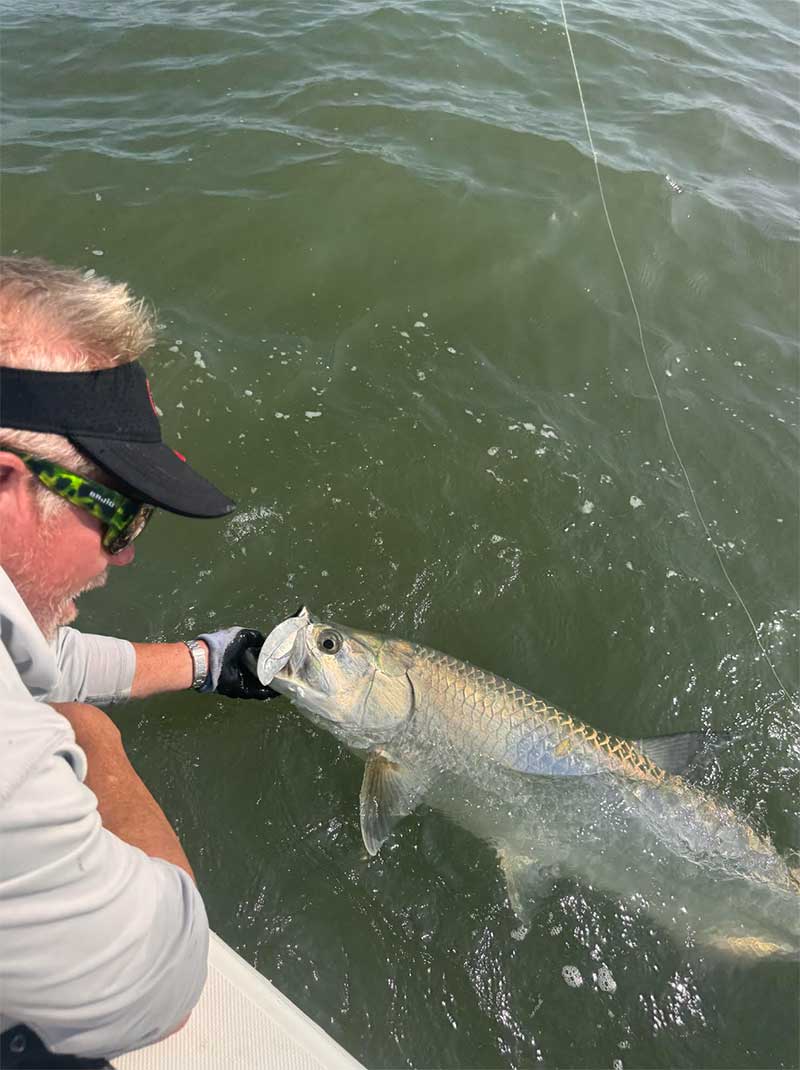
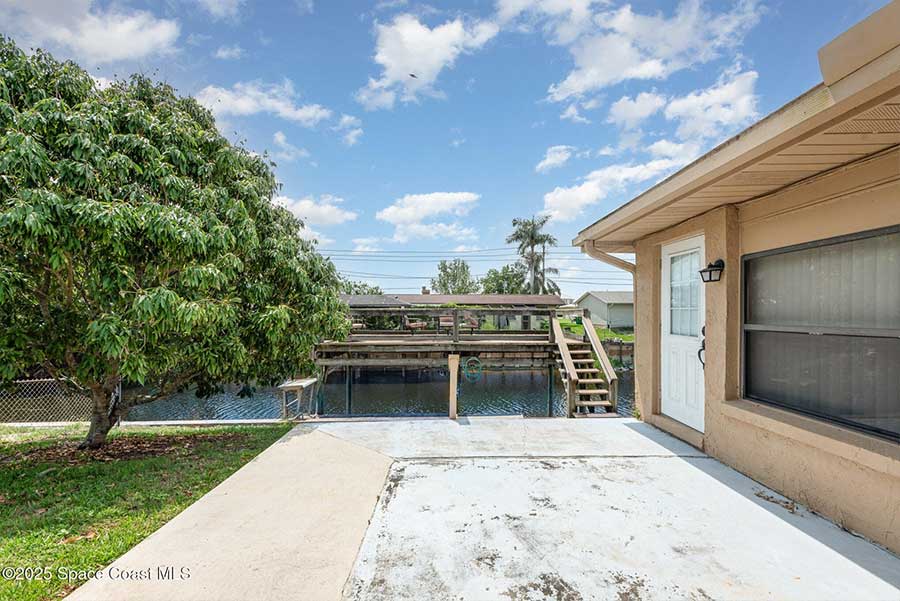

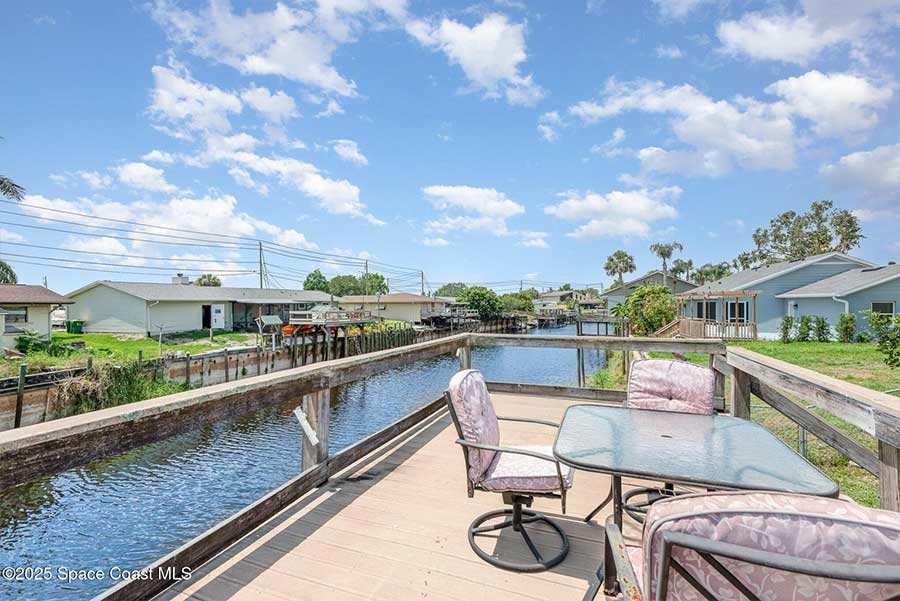



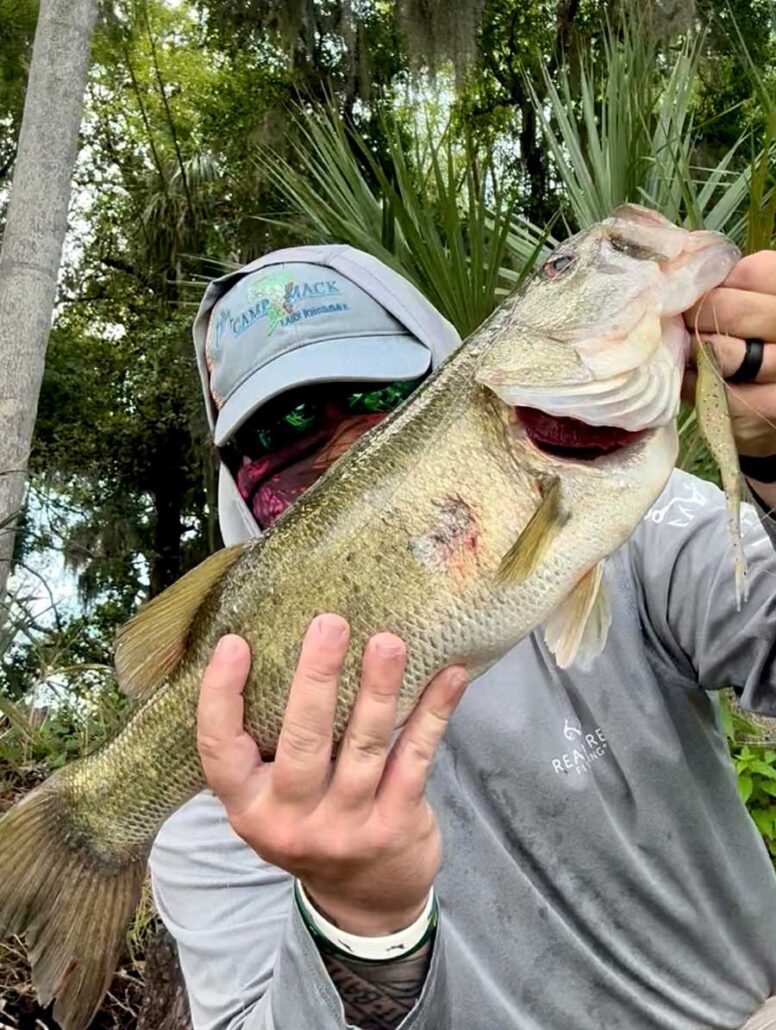

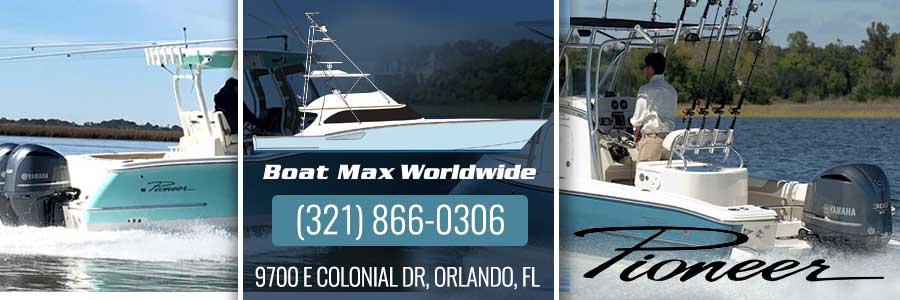

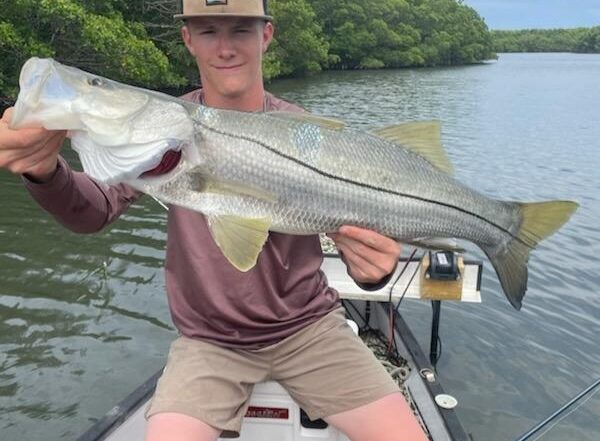
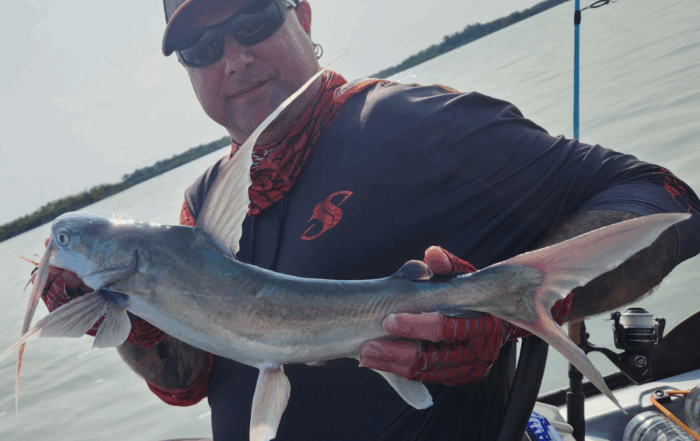
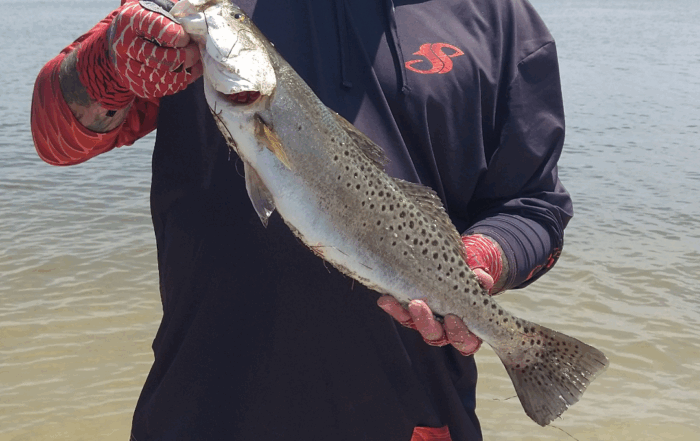
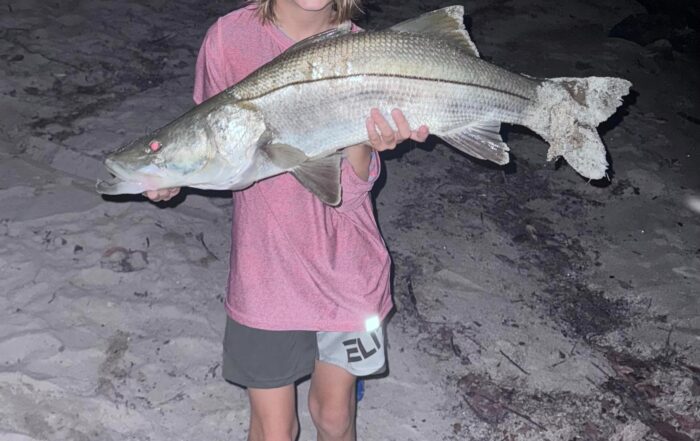


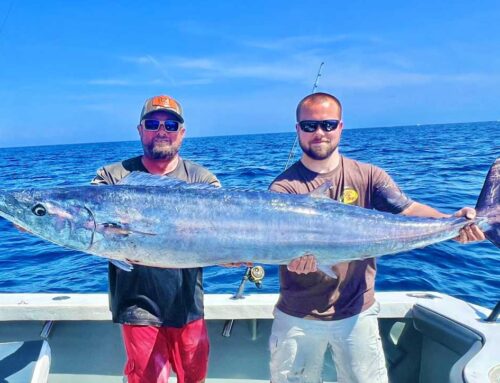

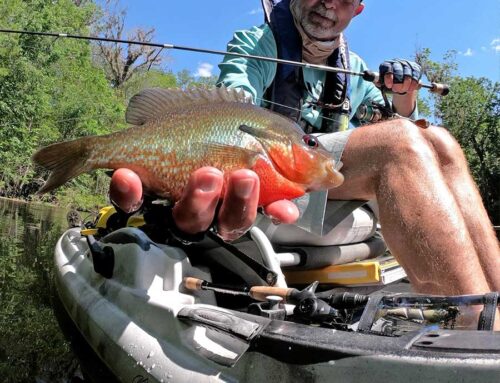
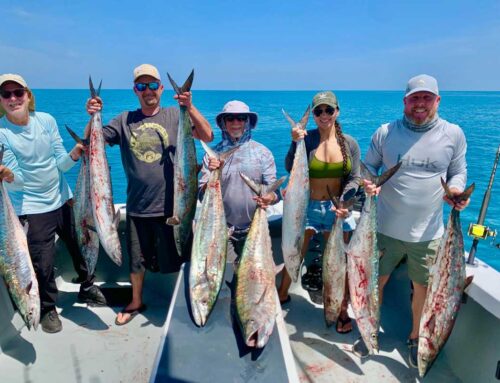

Leave A Comment
You must be logged in to post a comment.